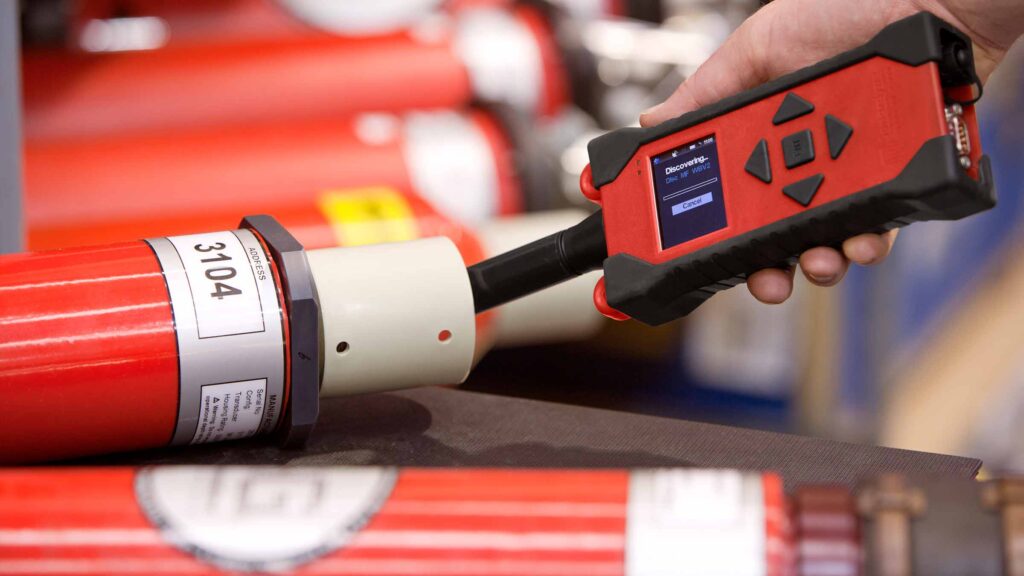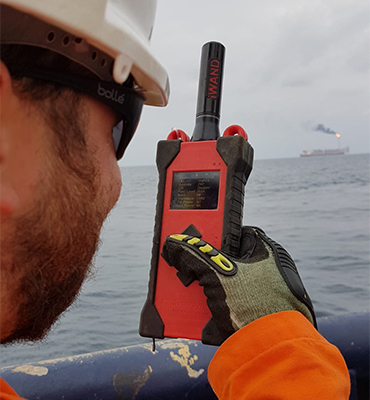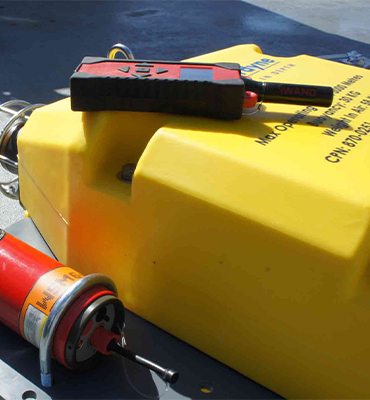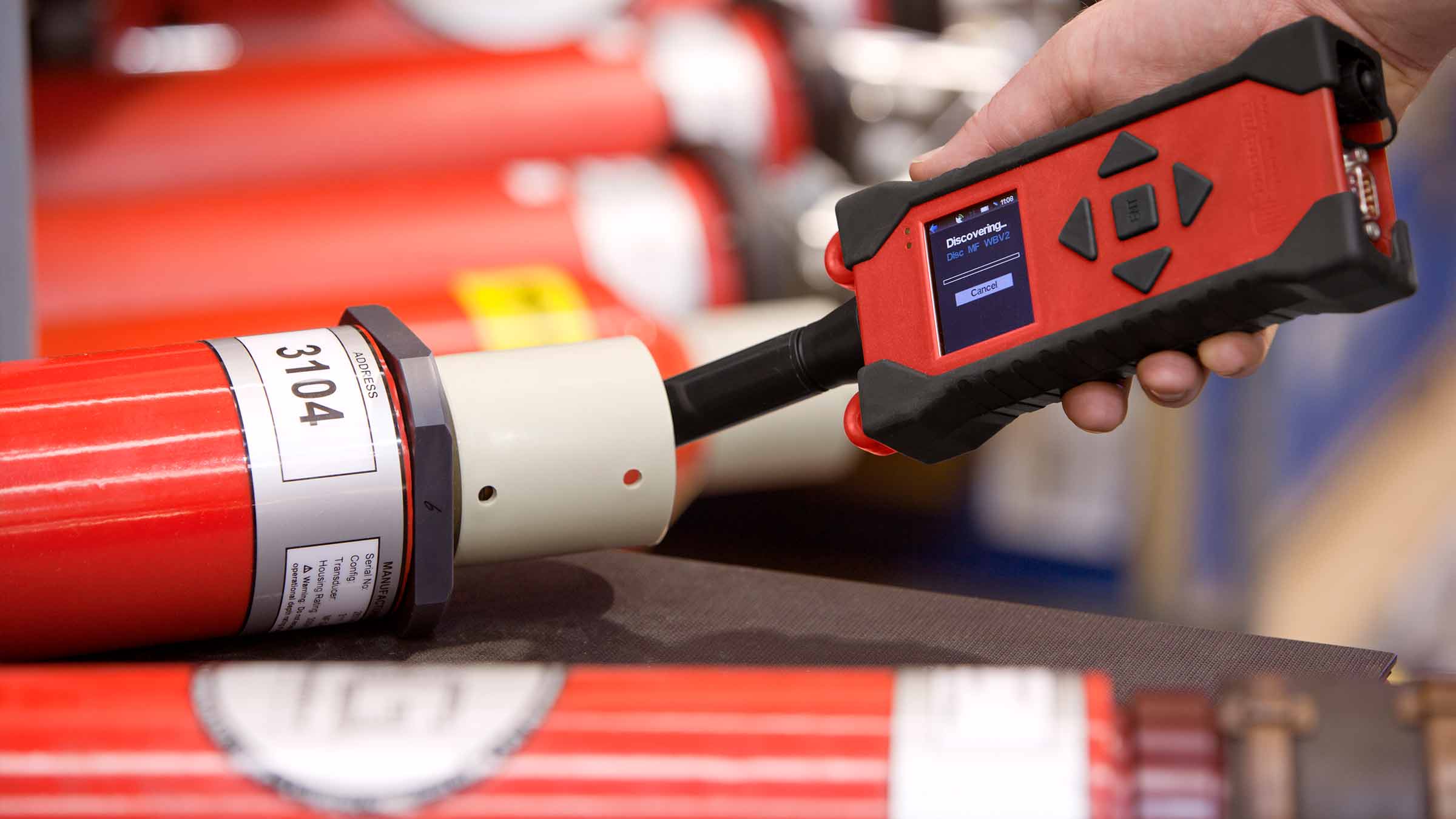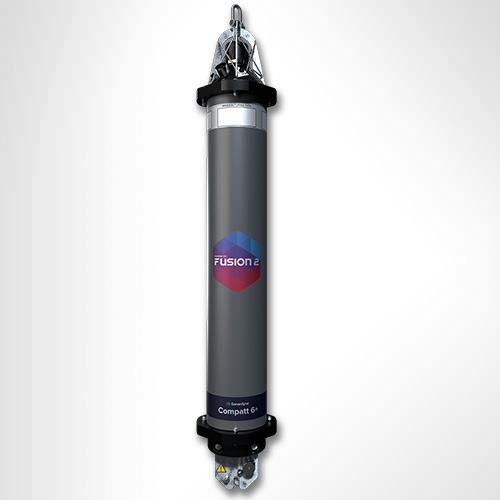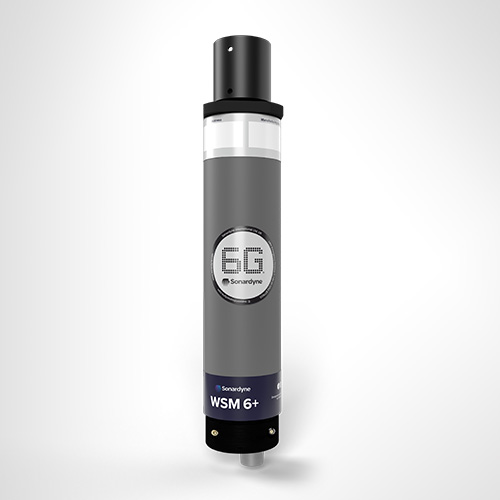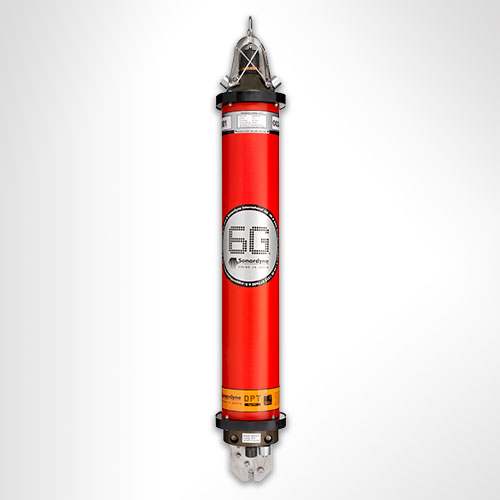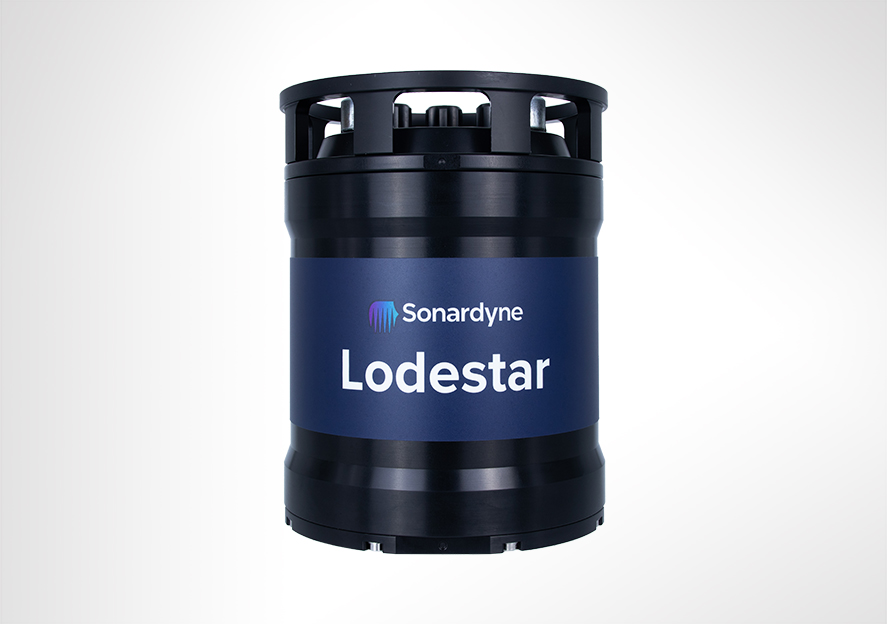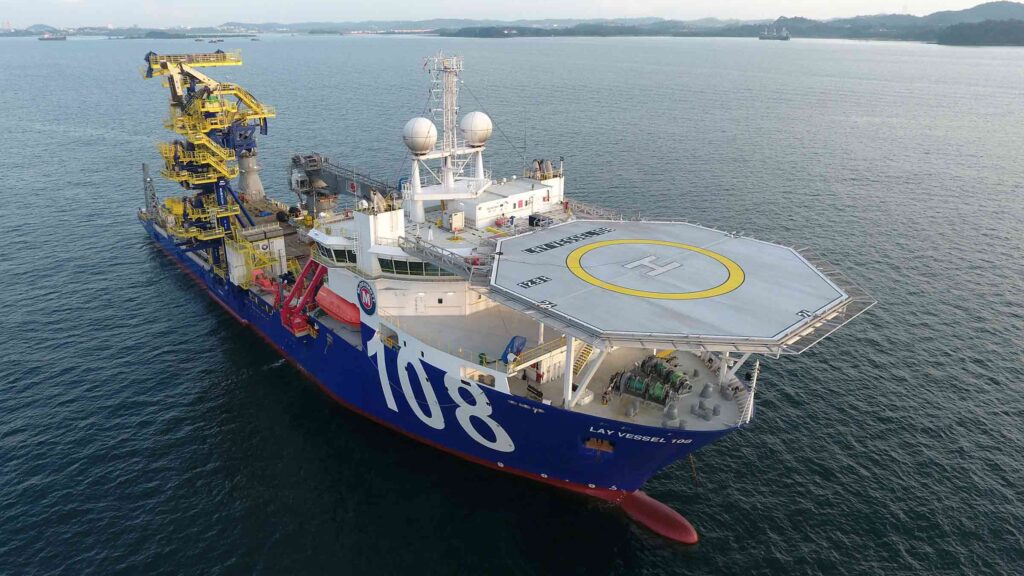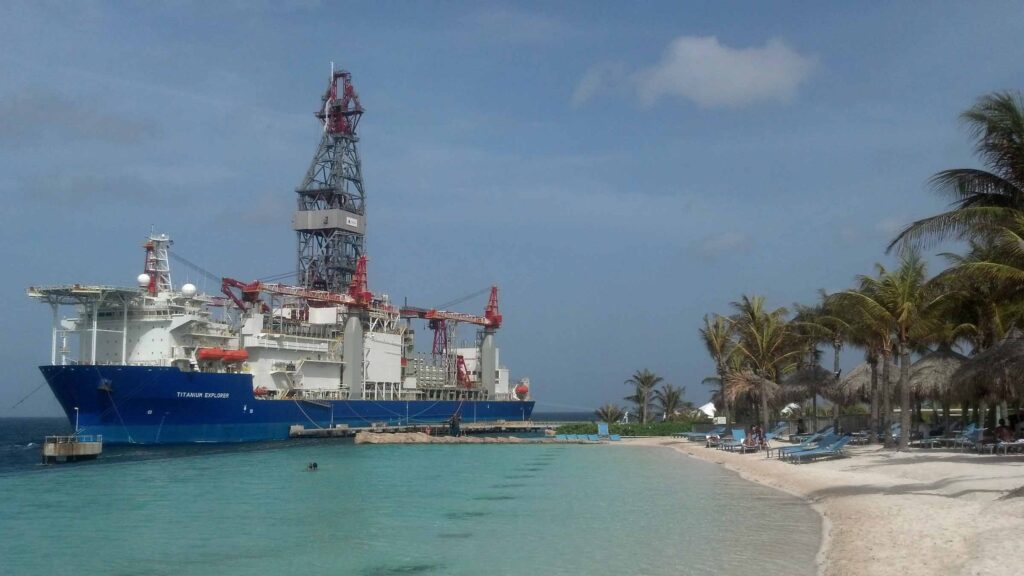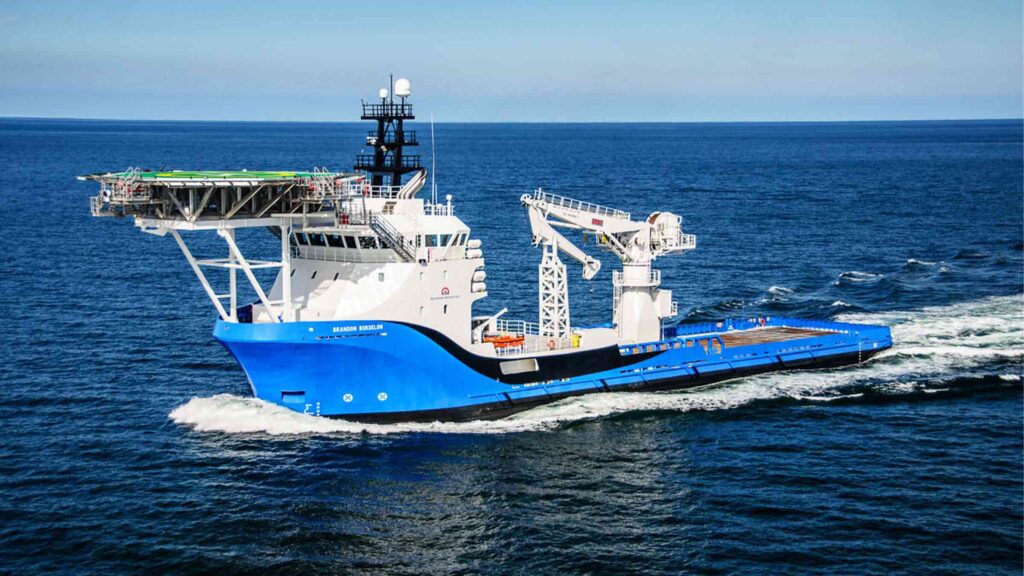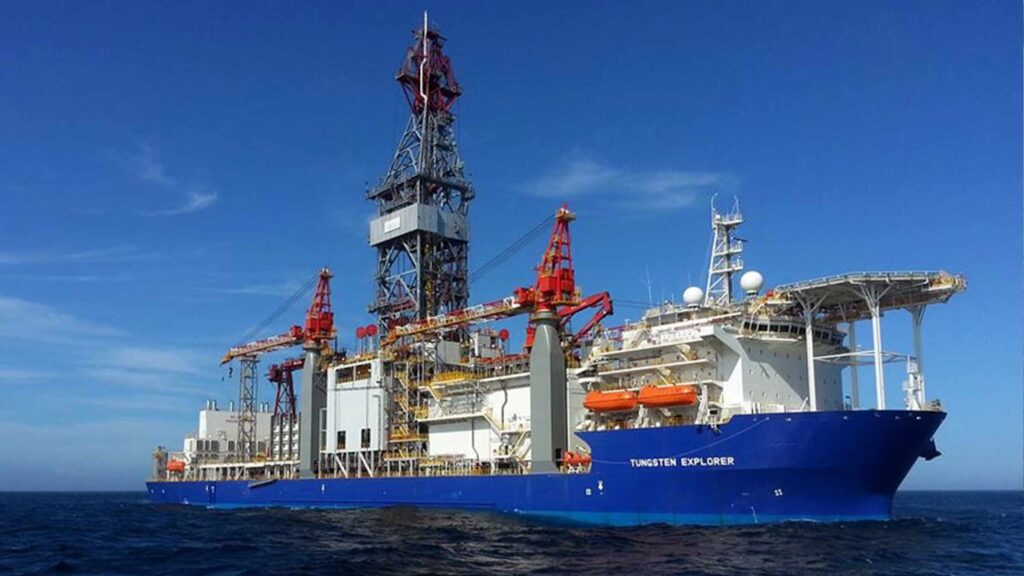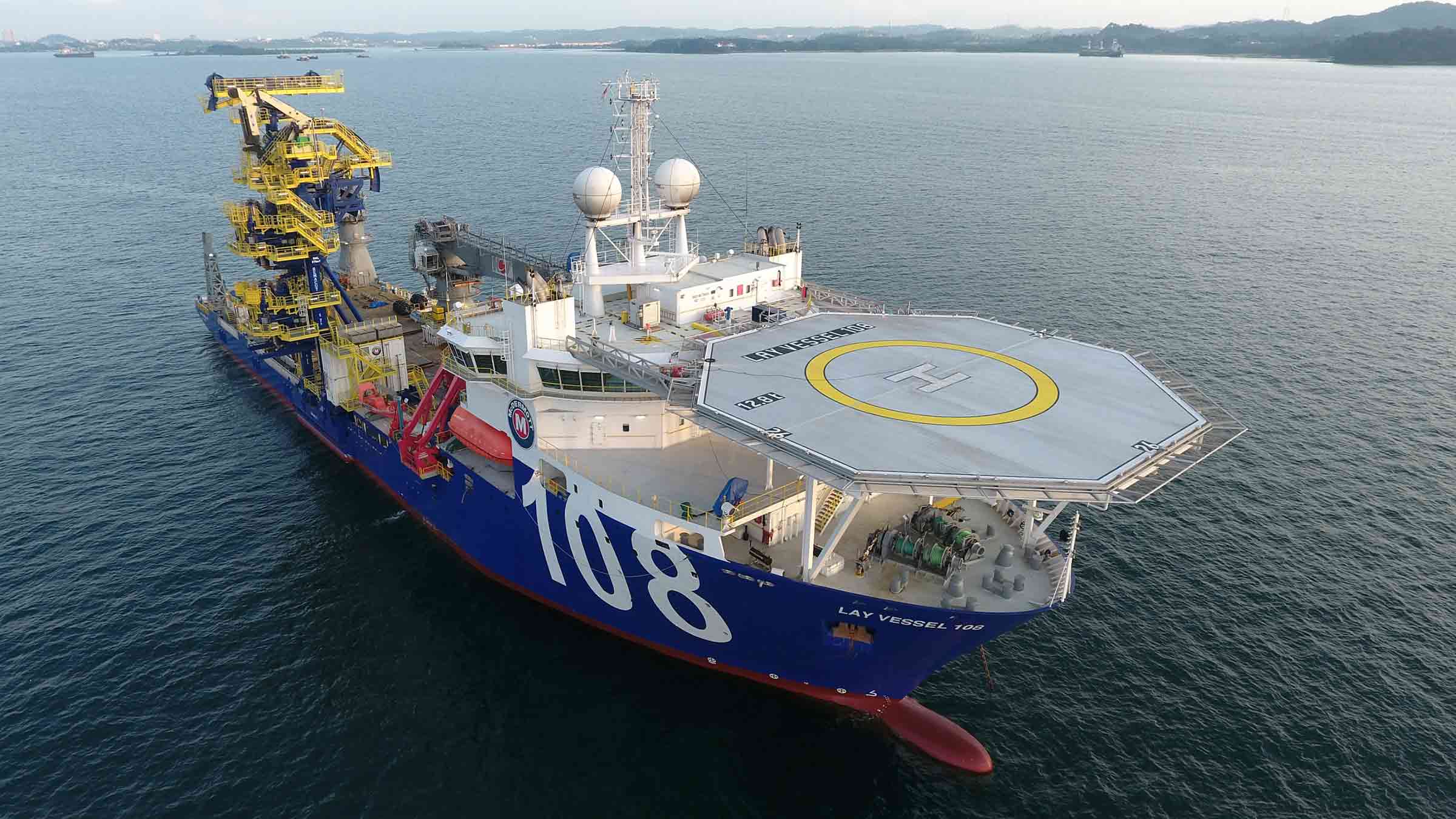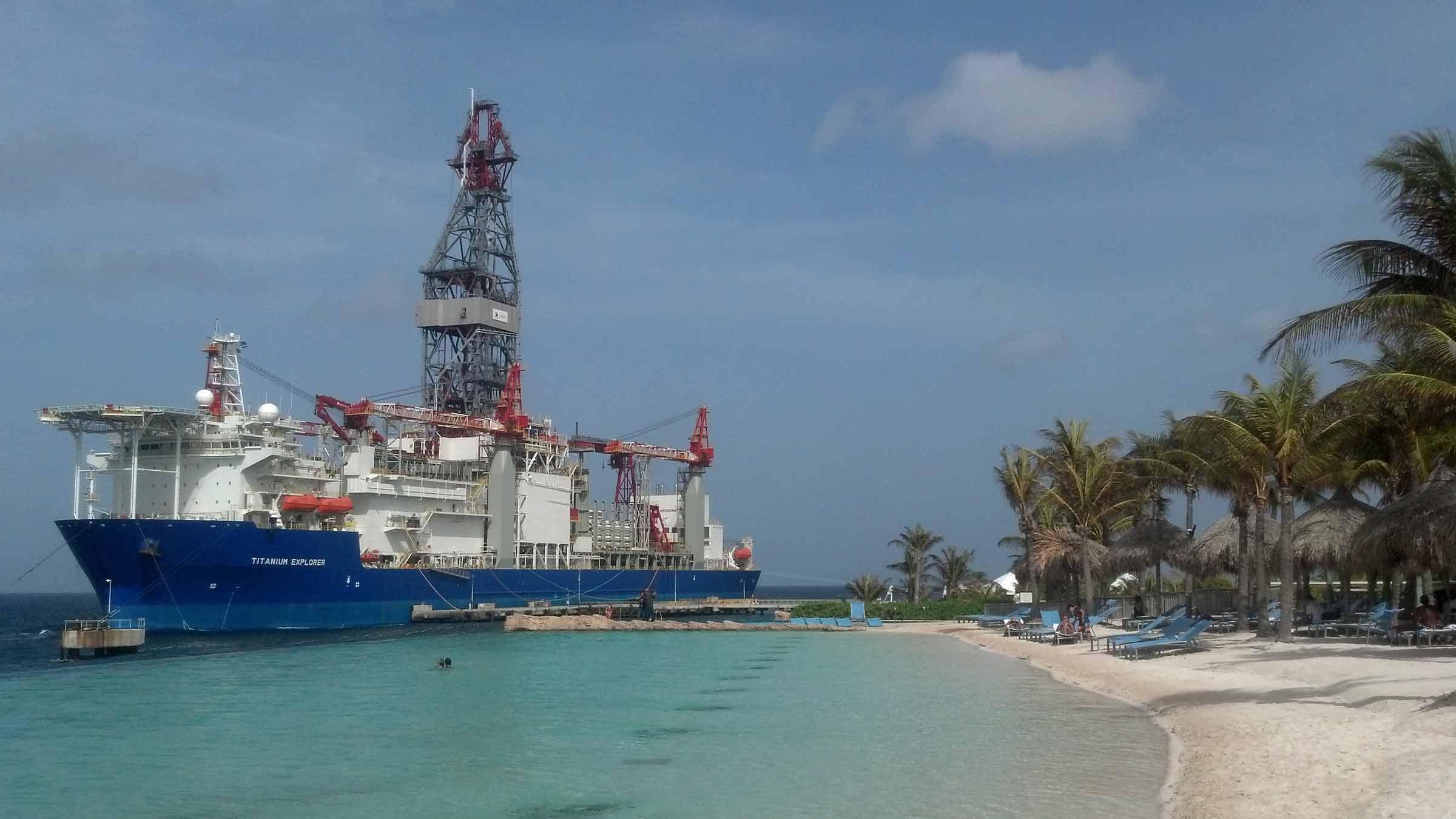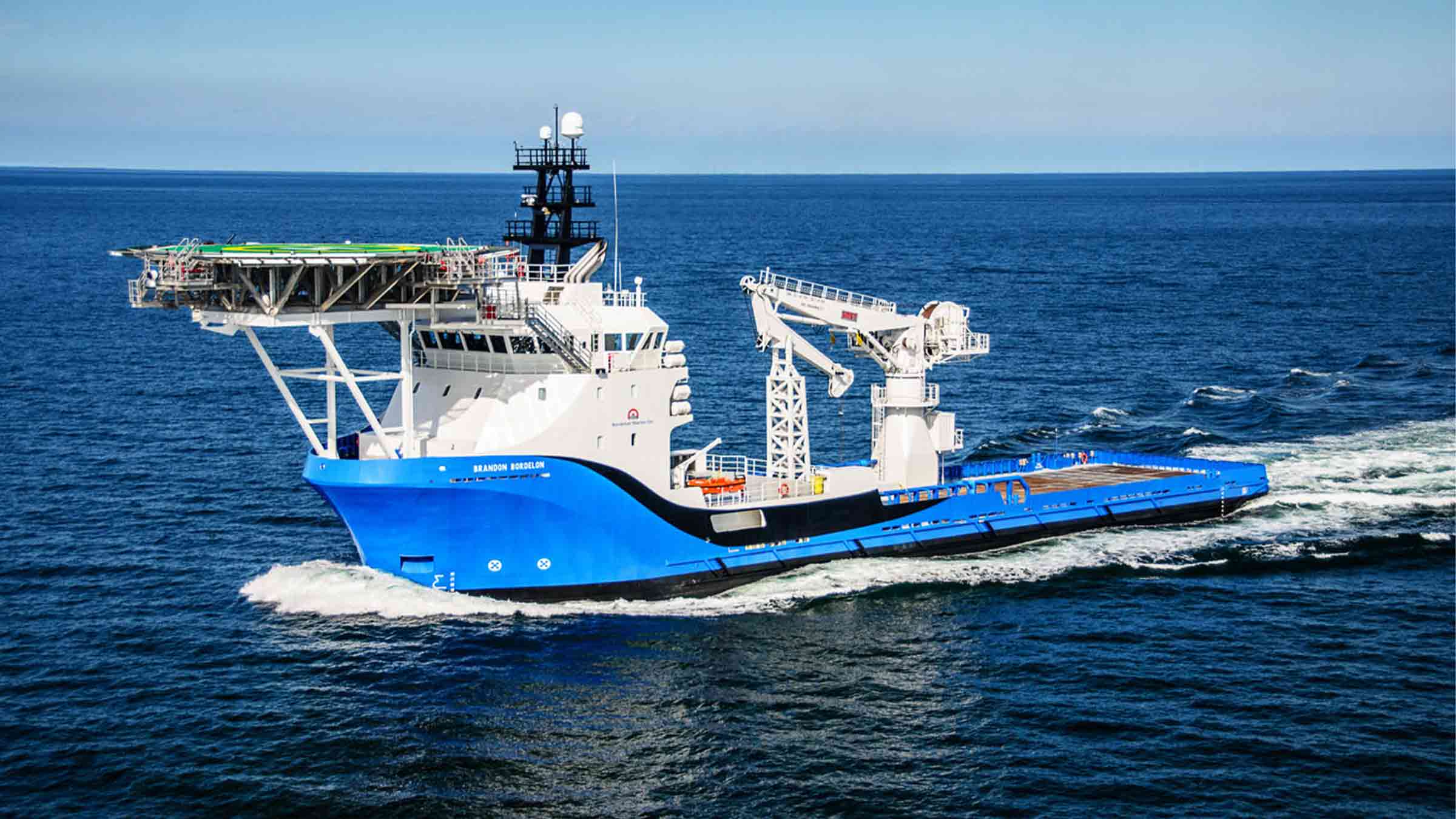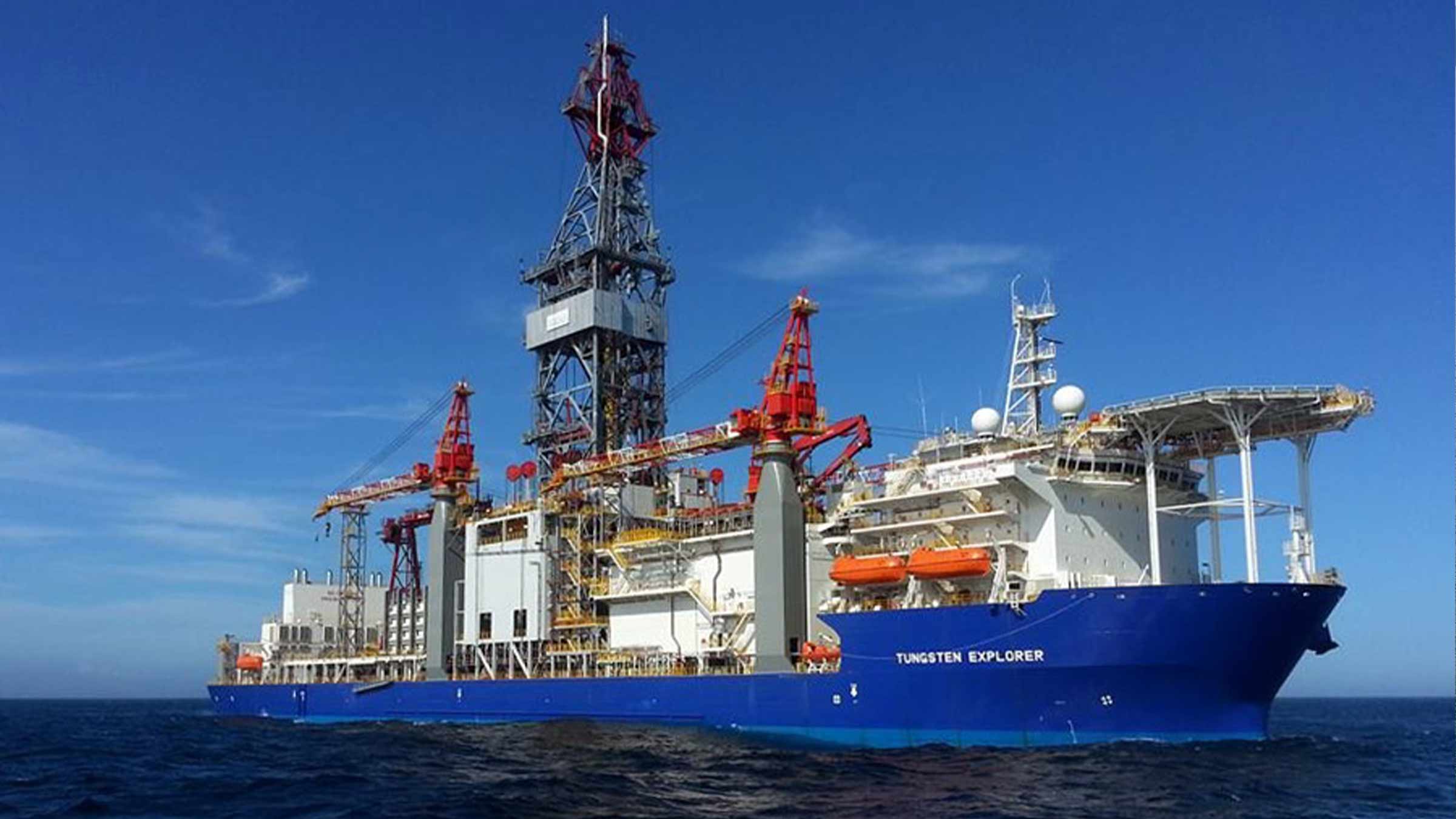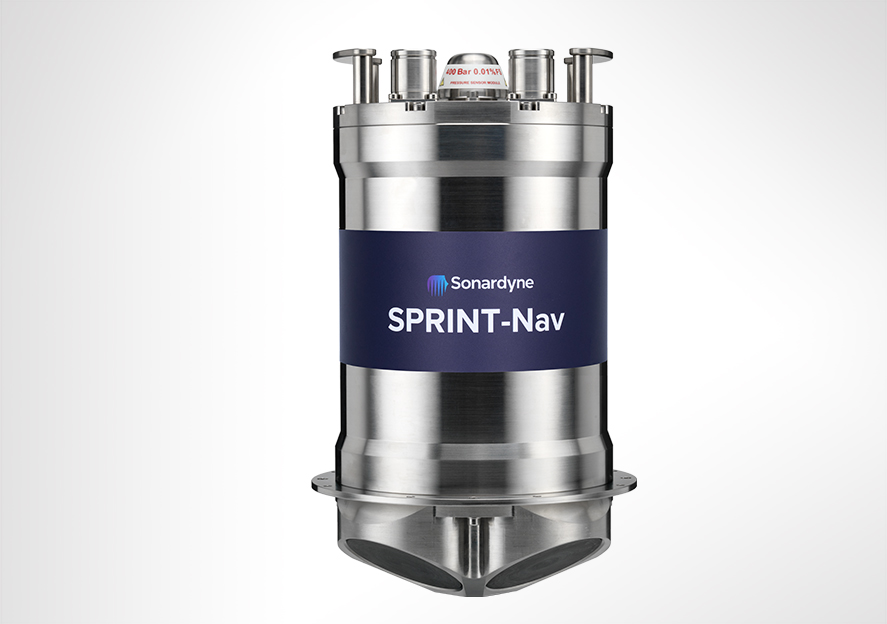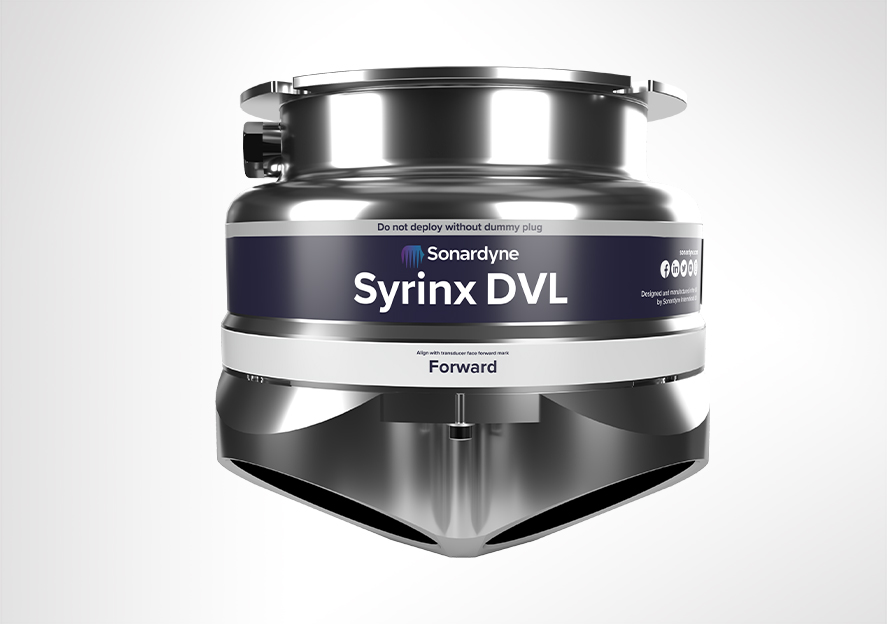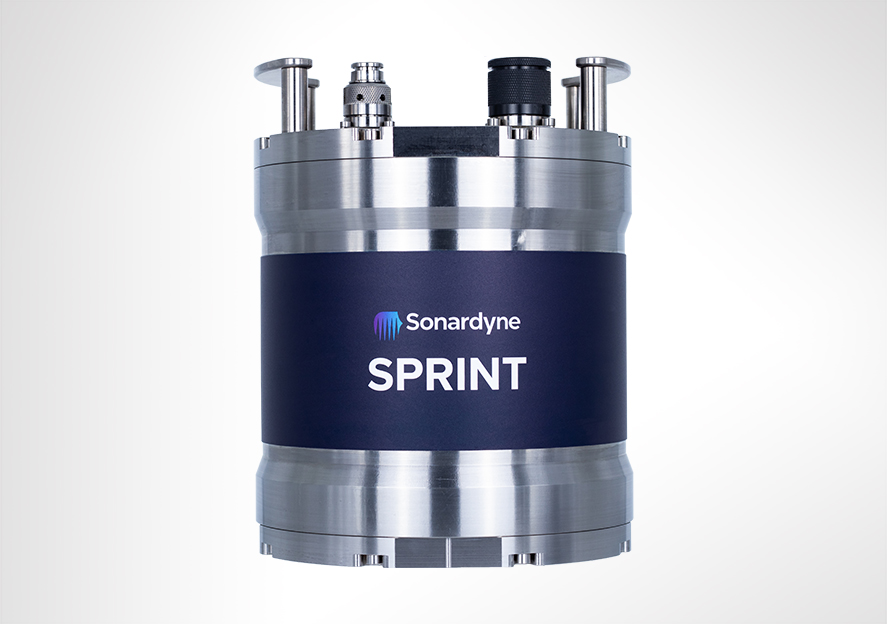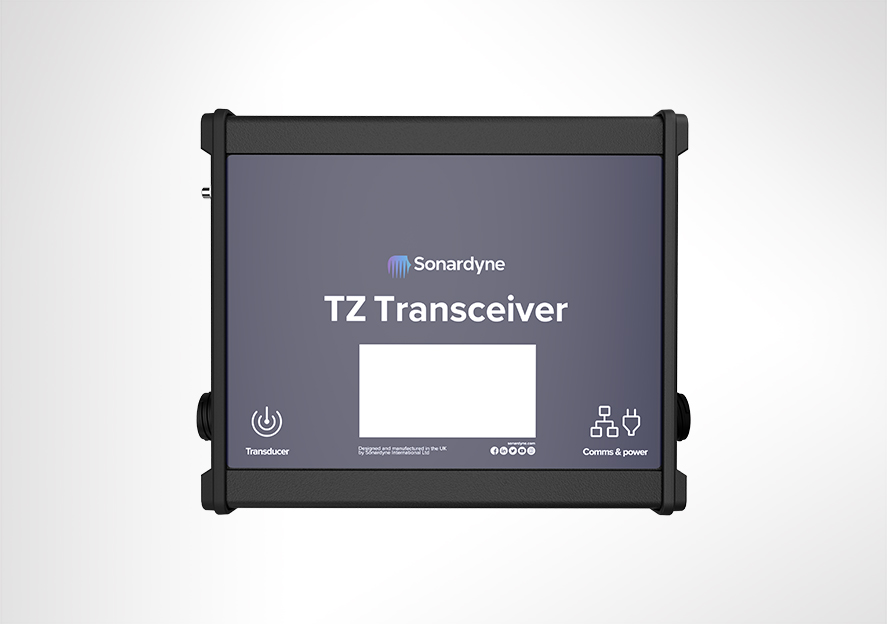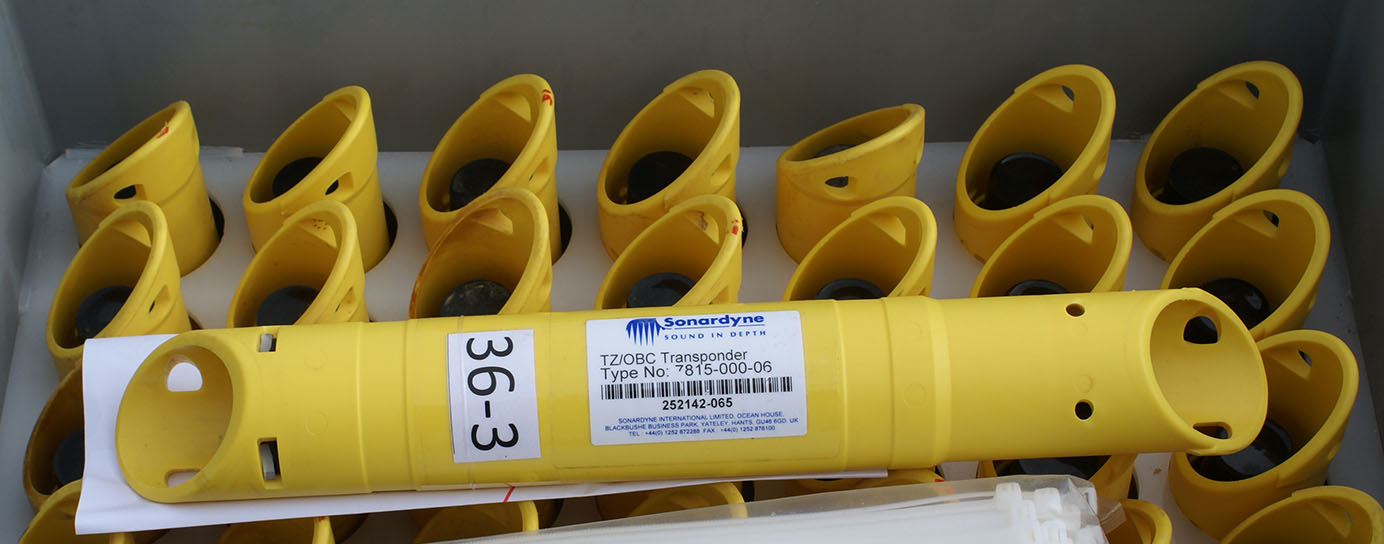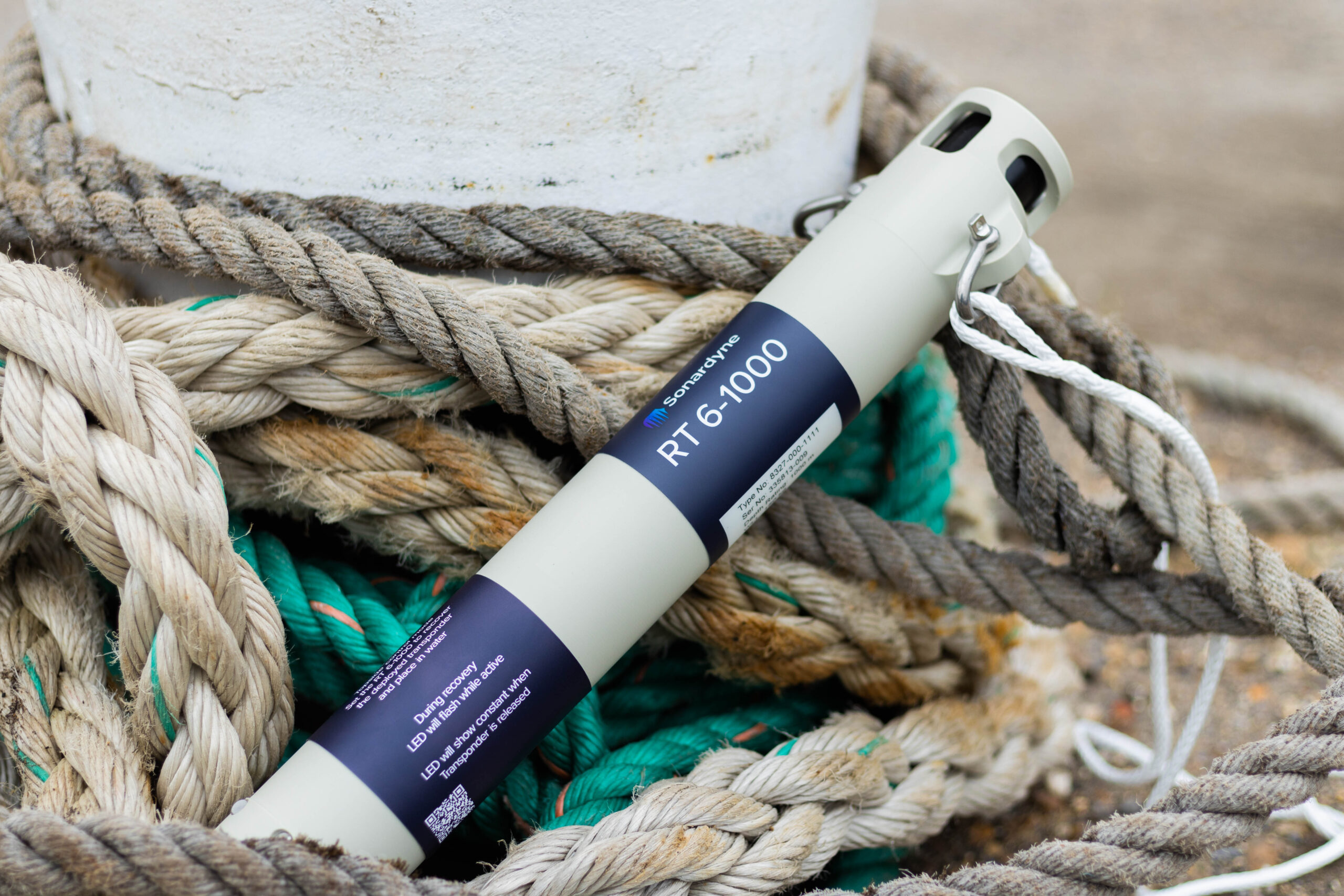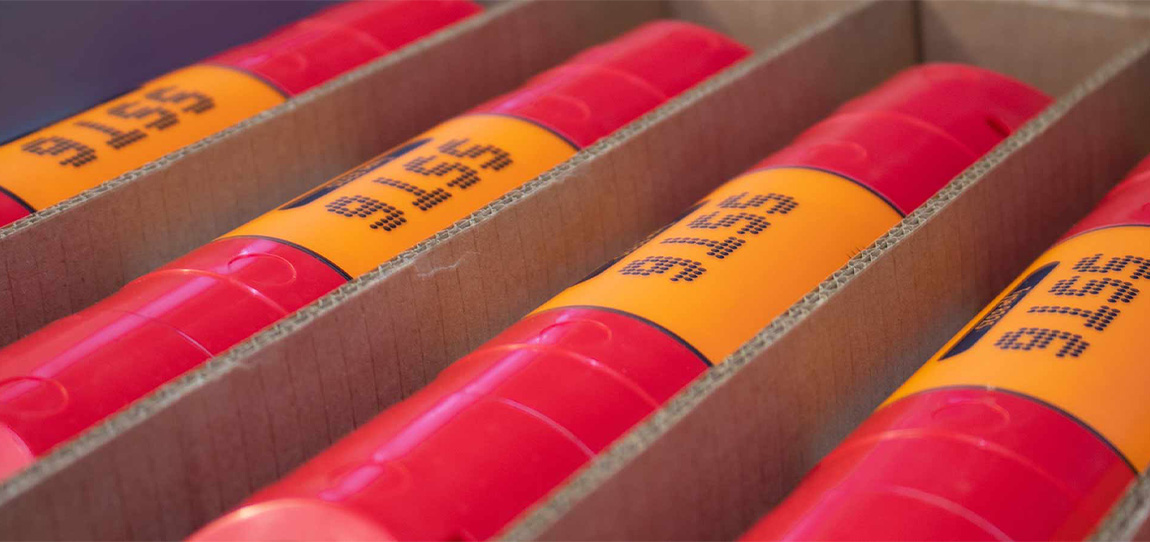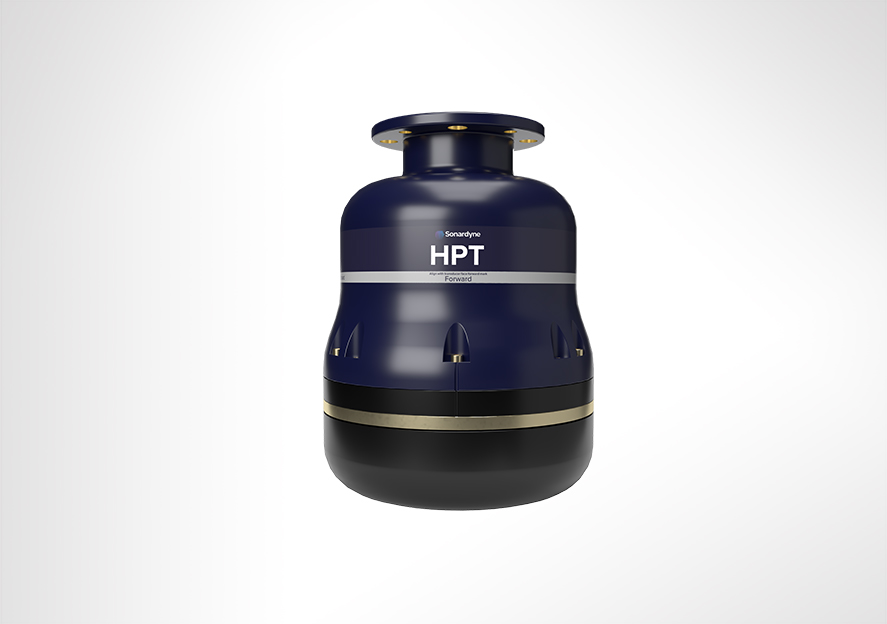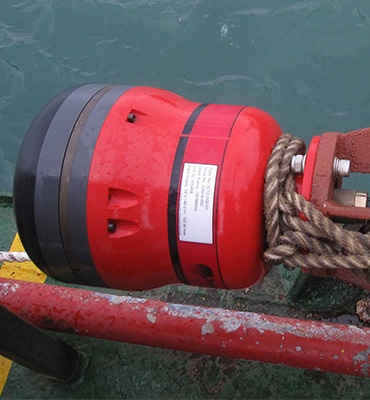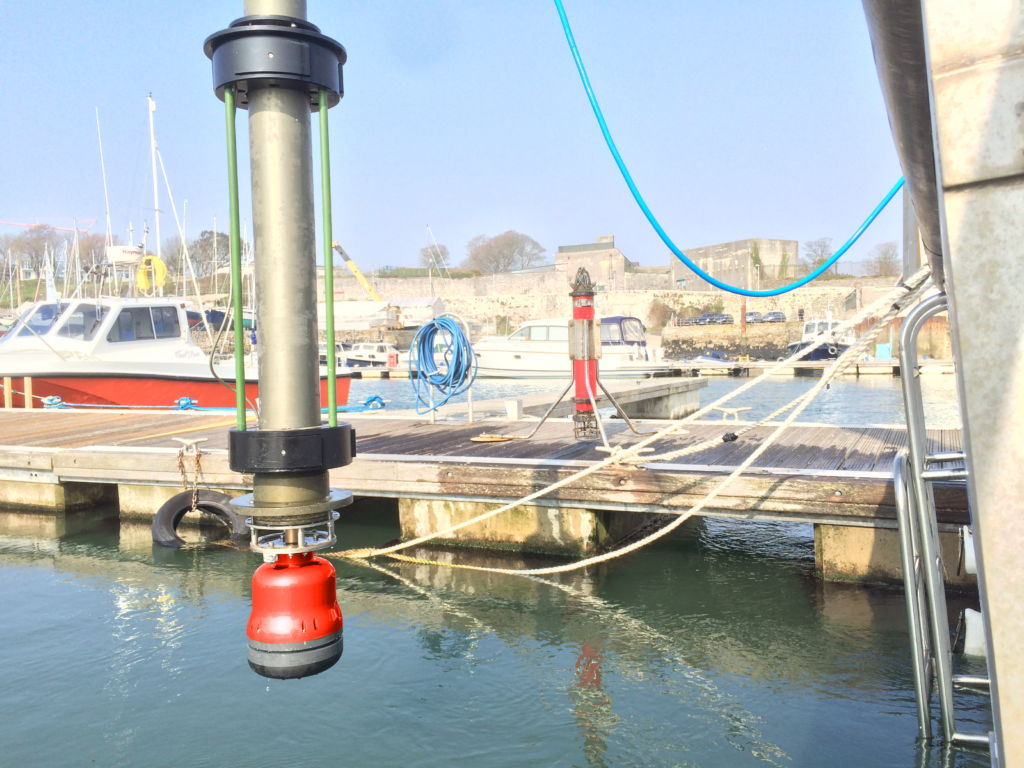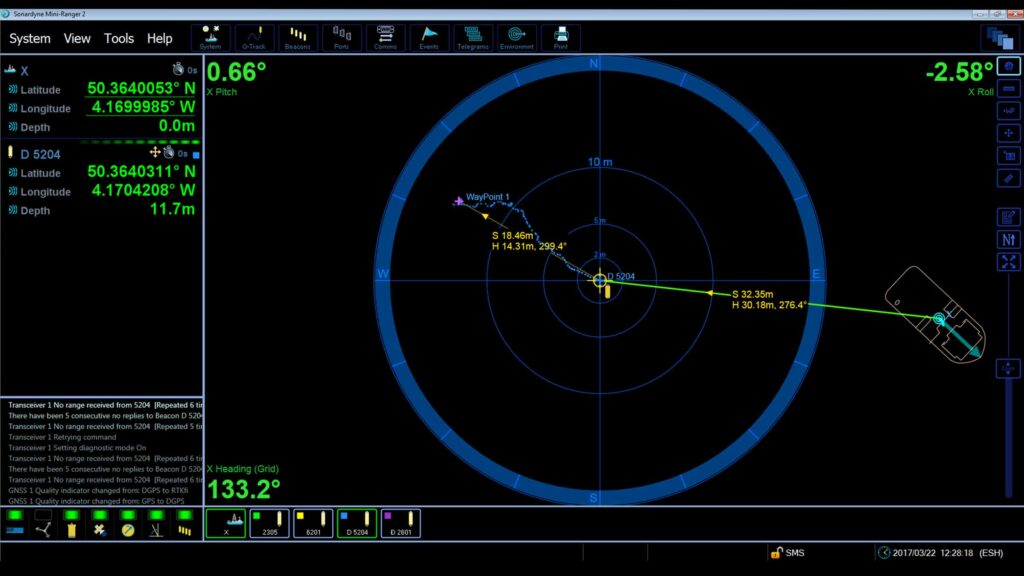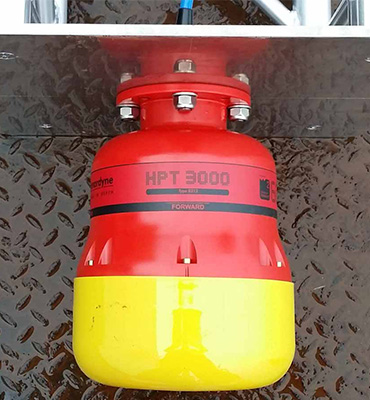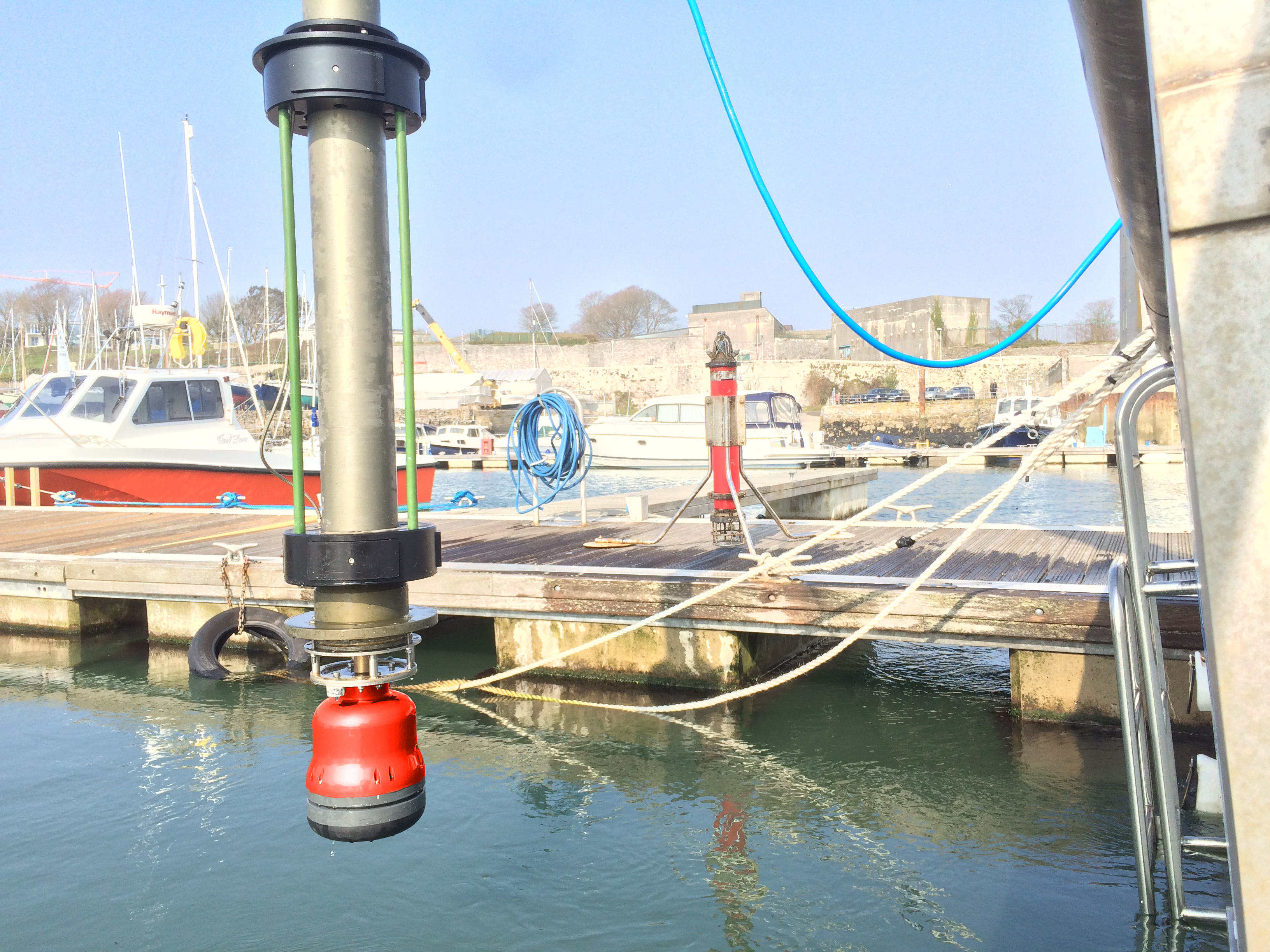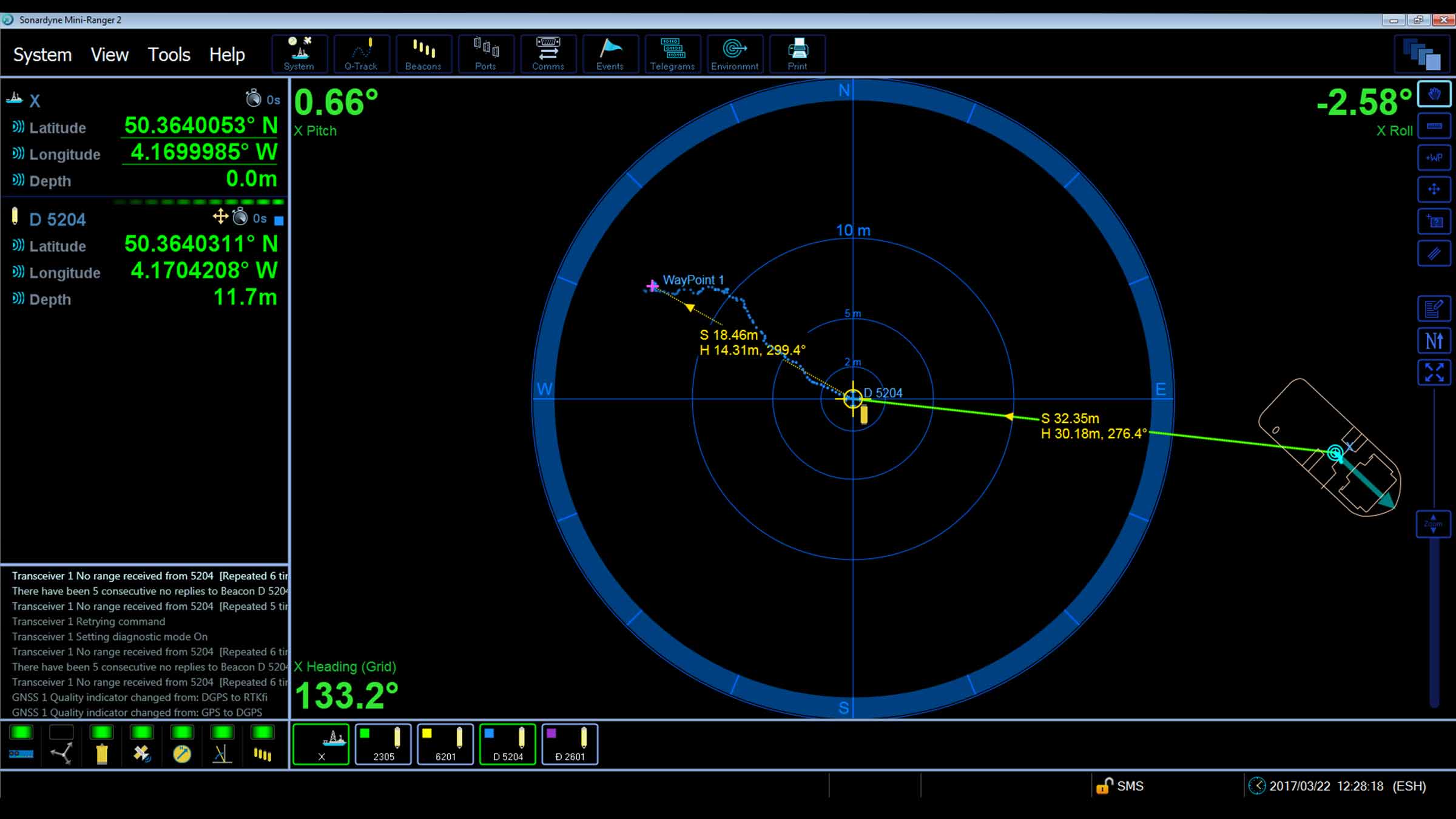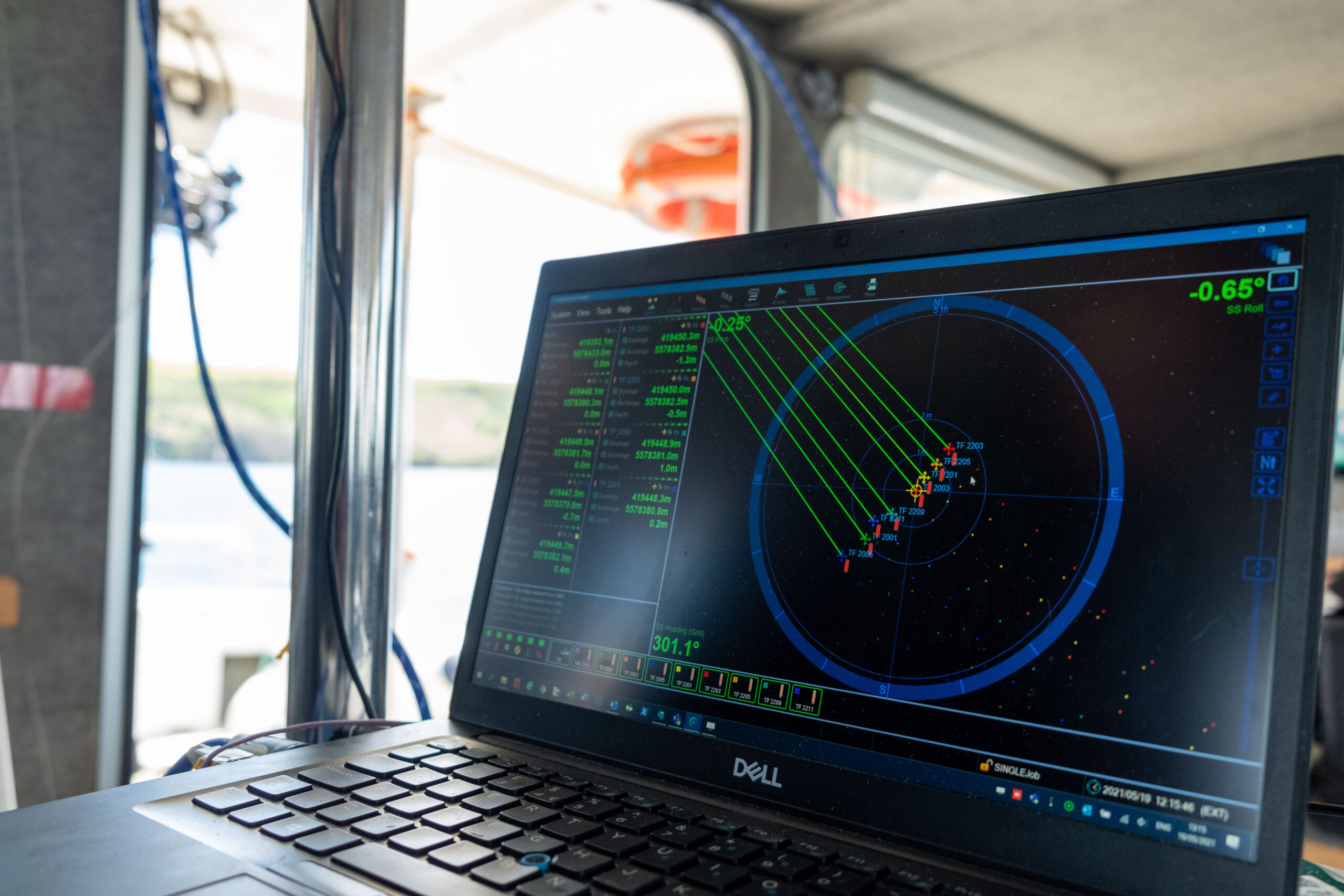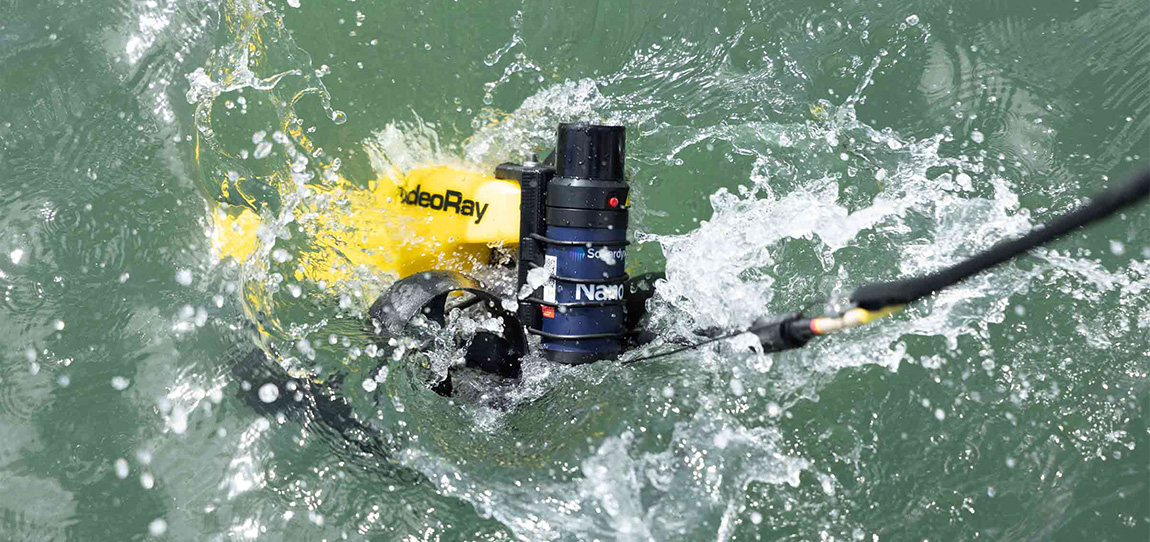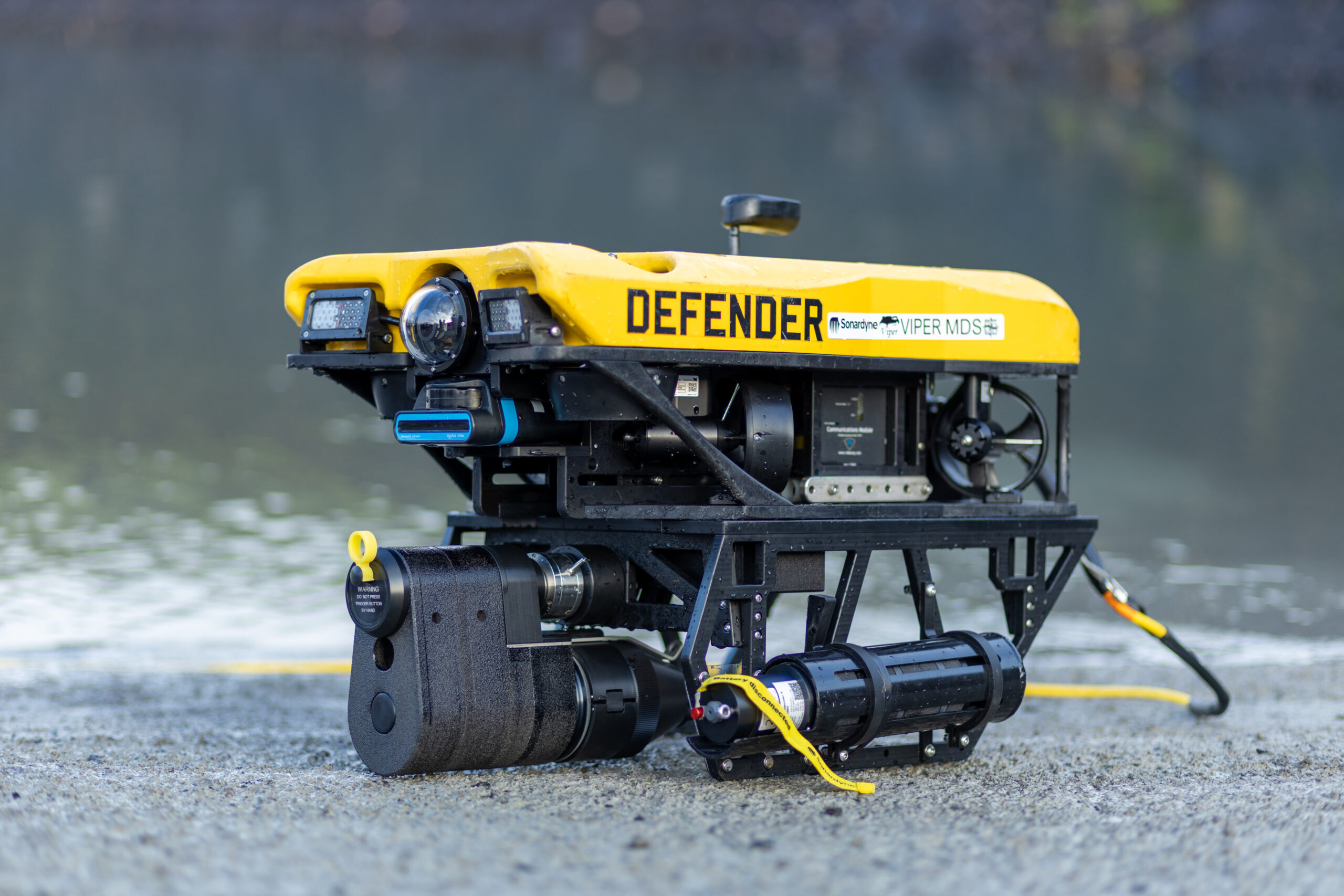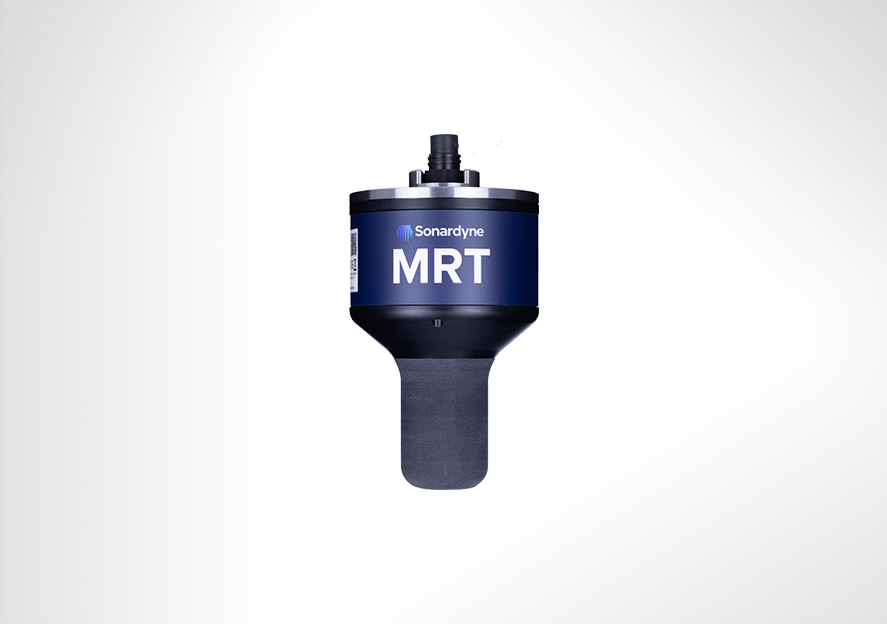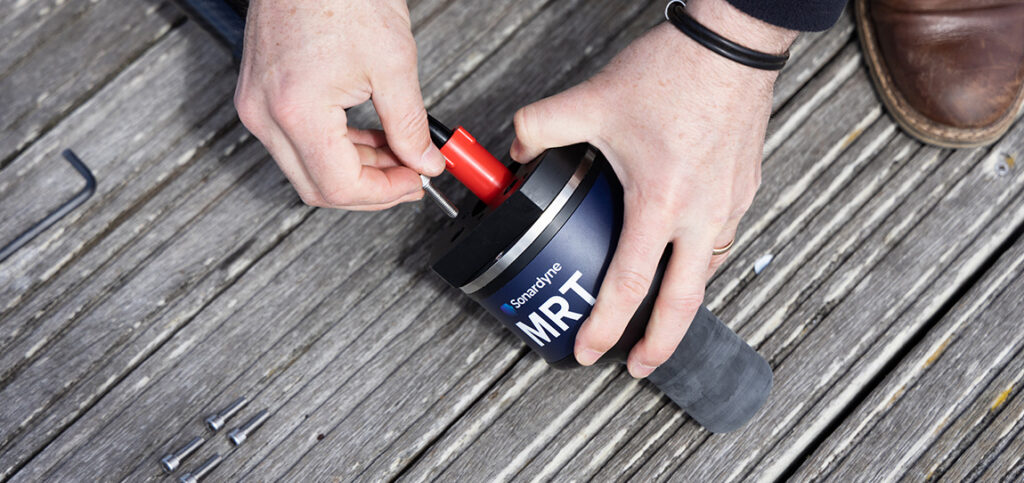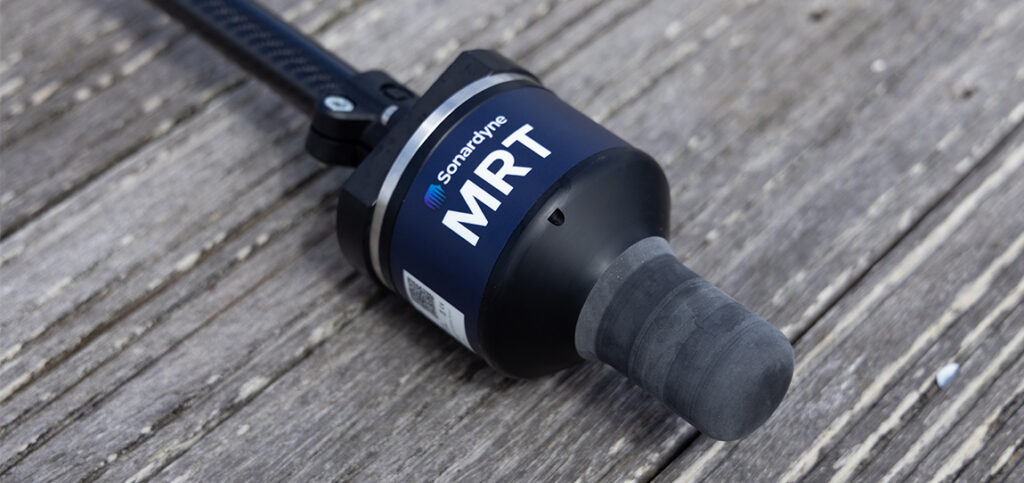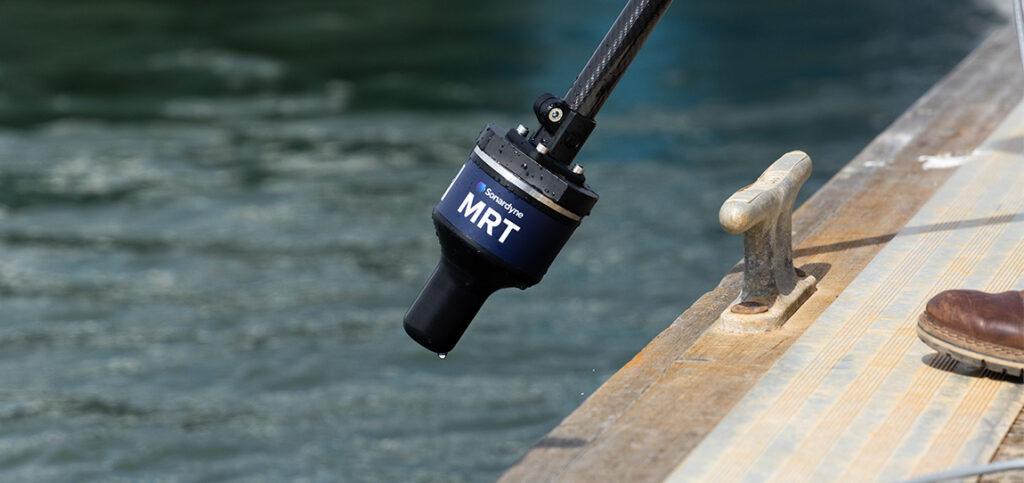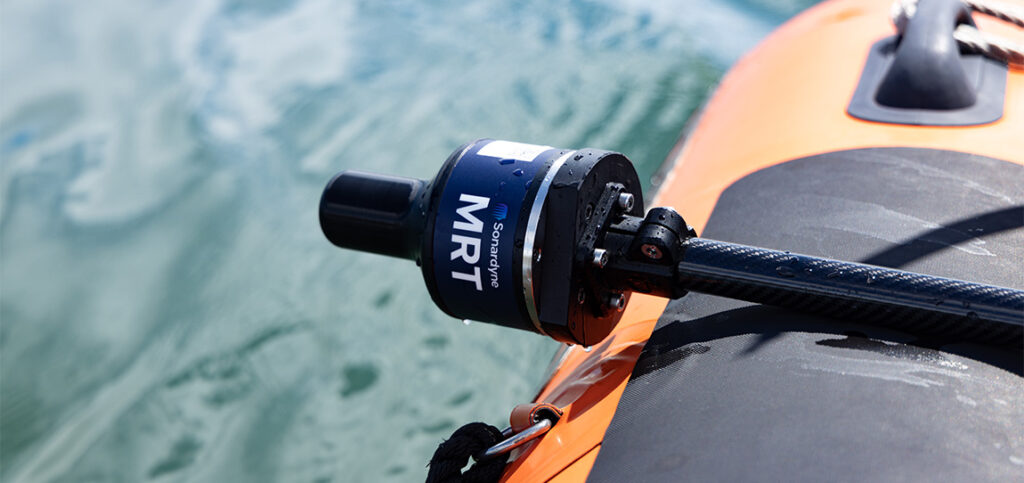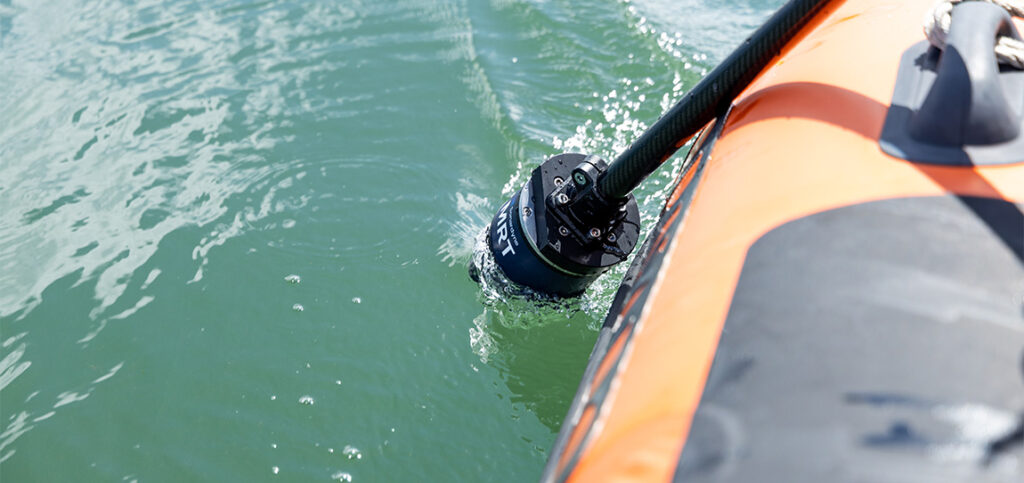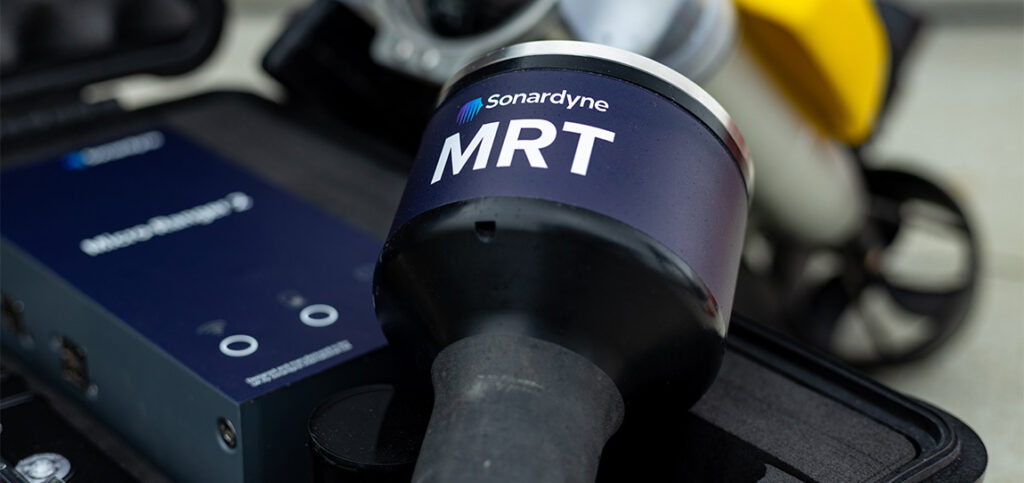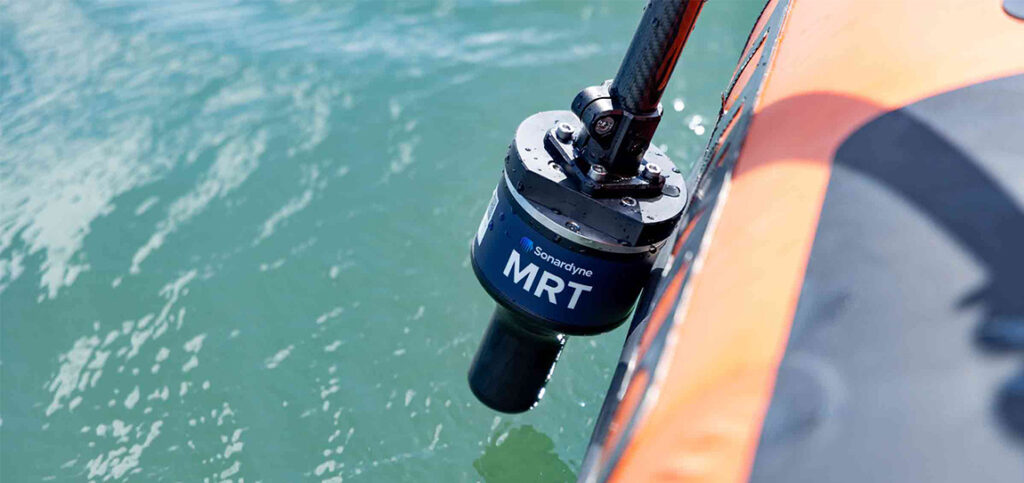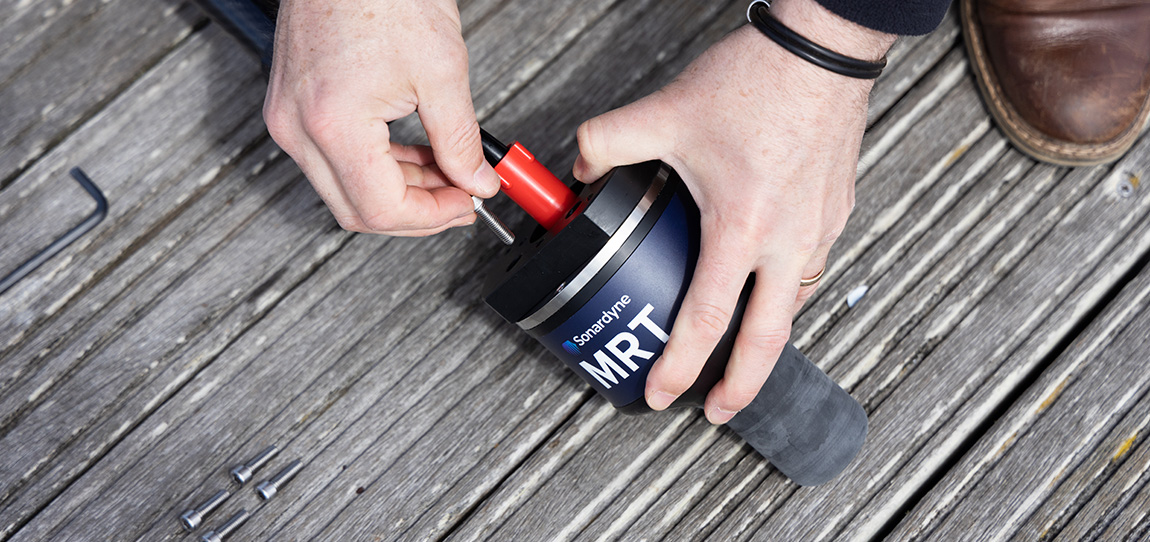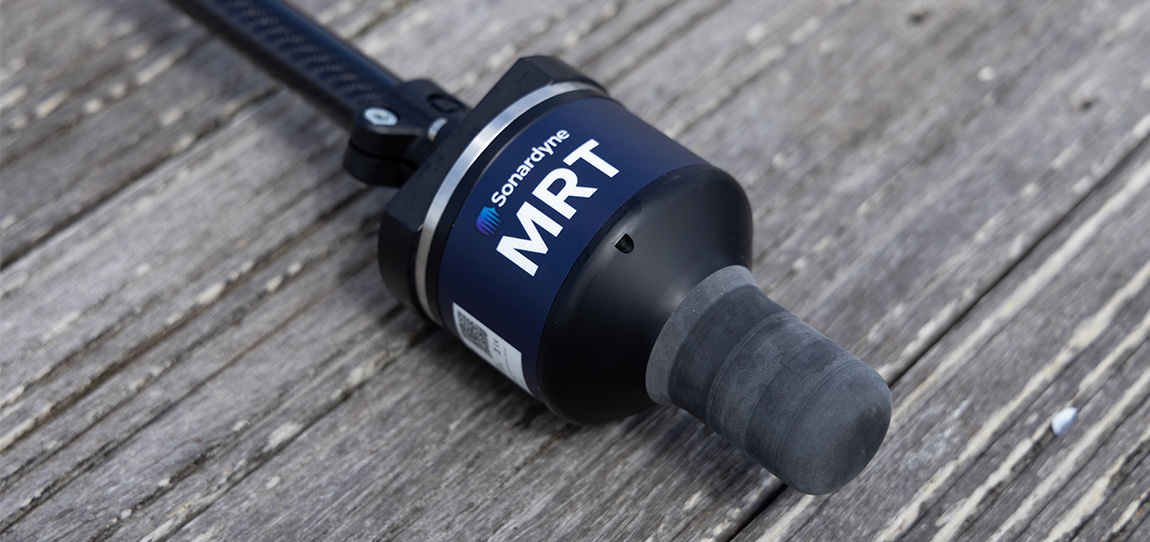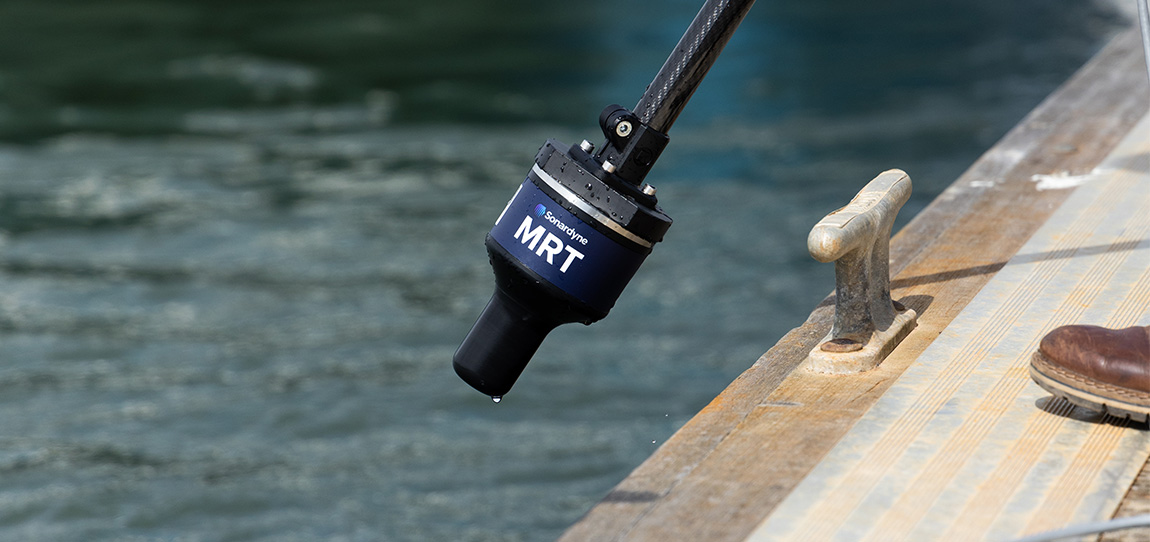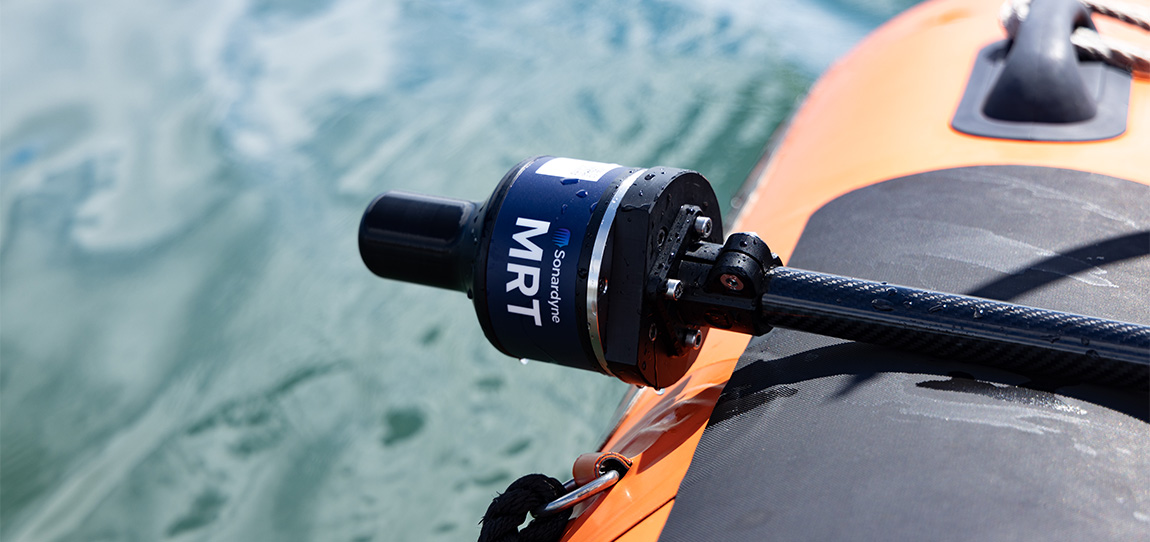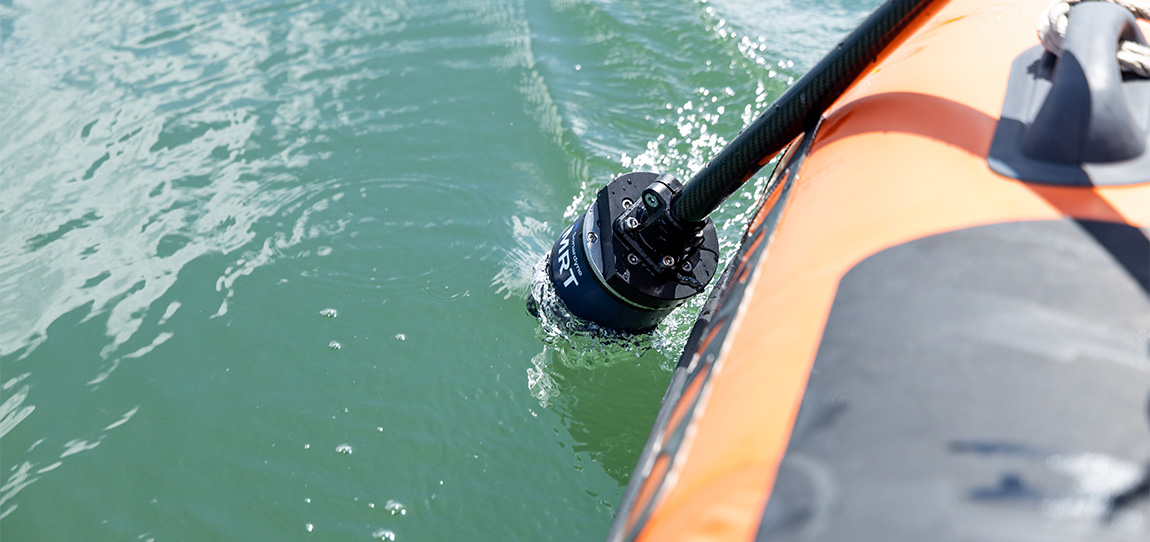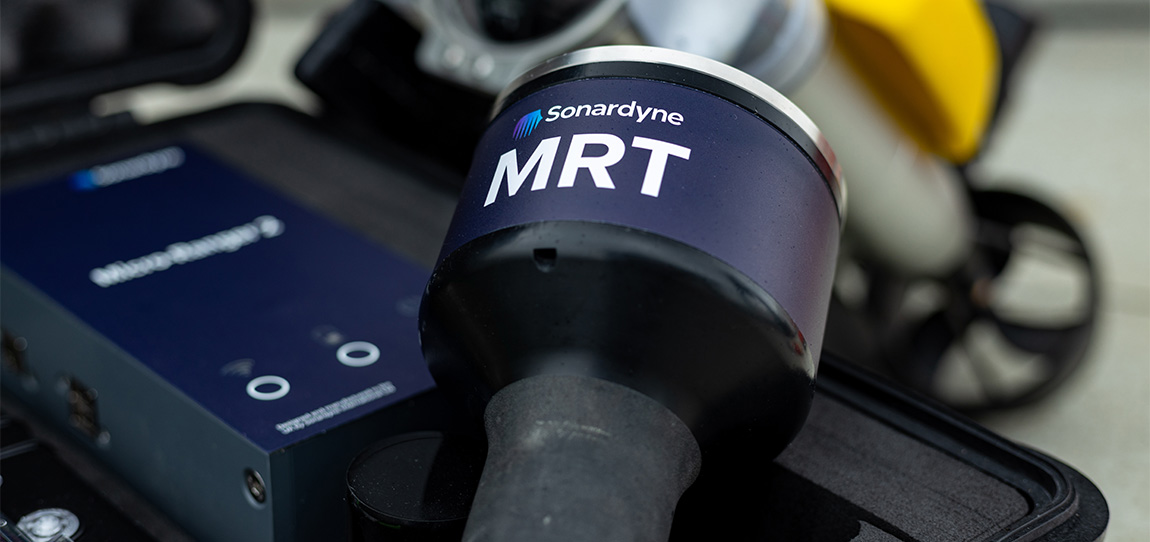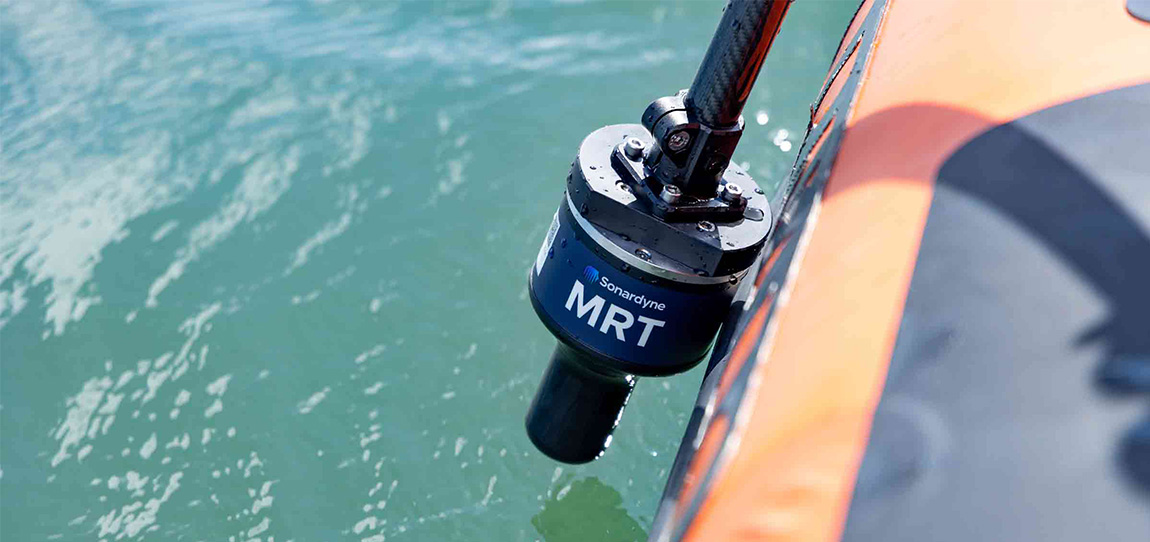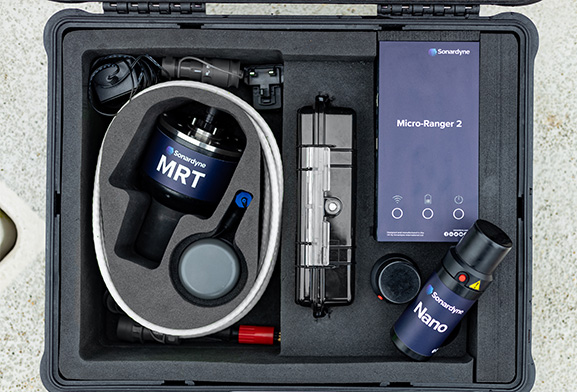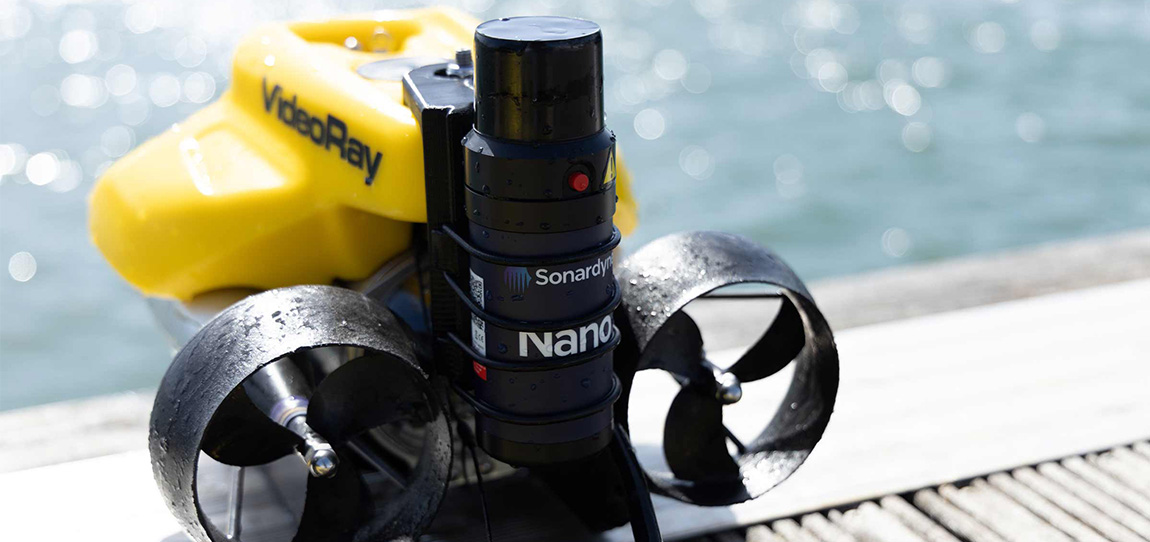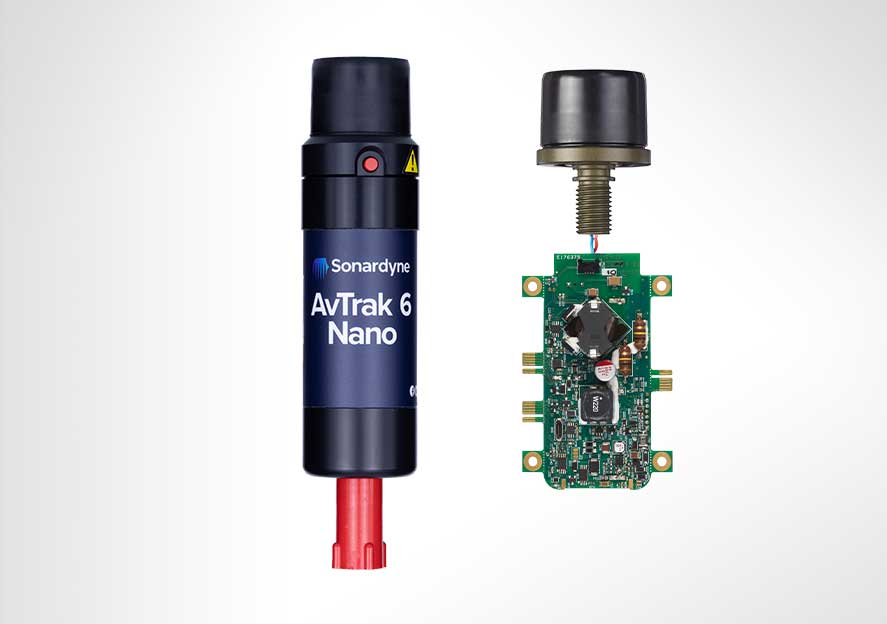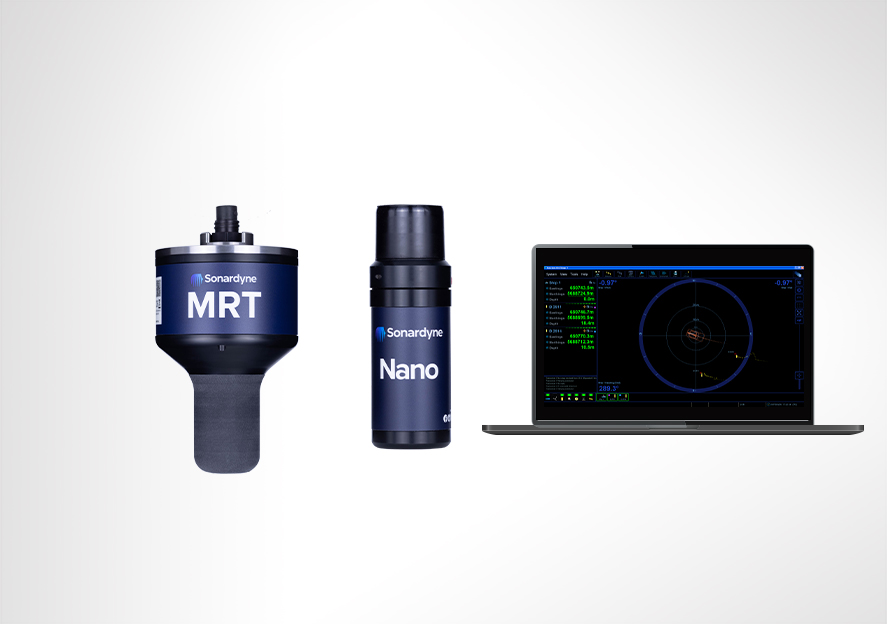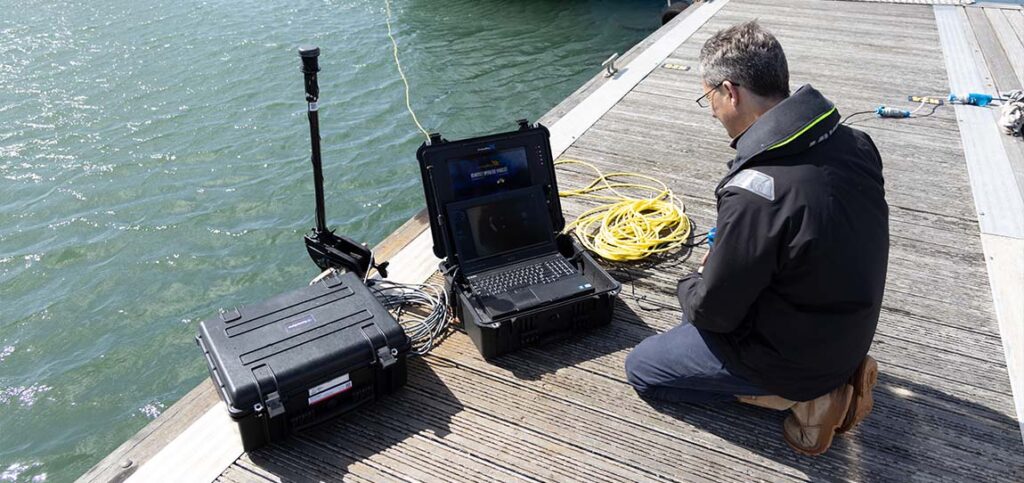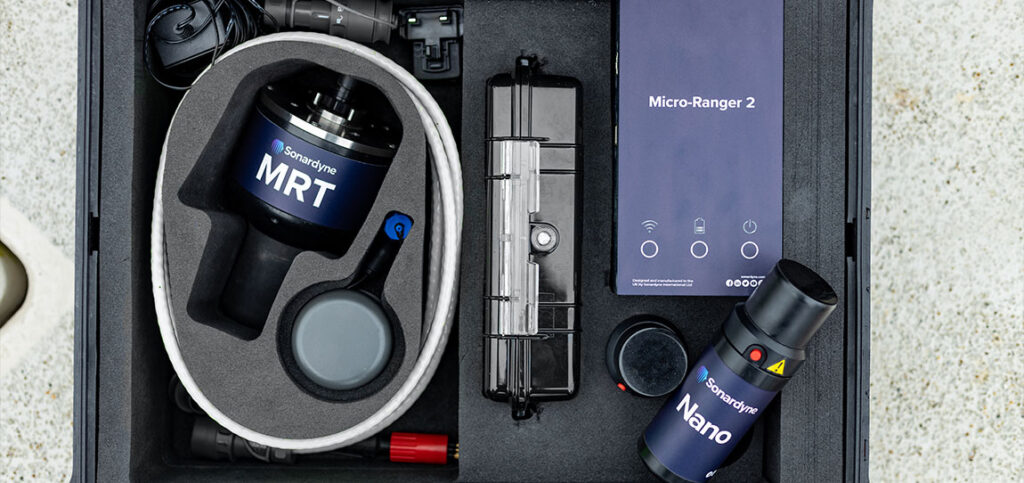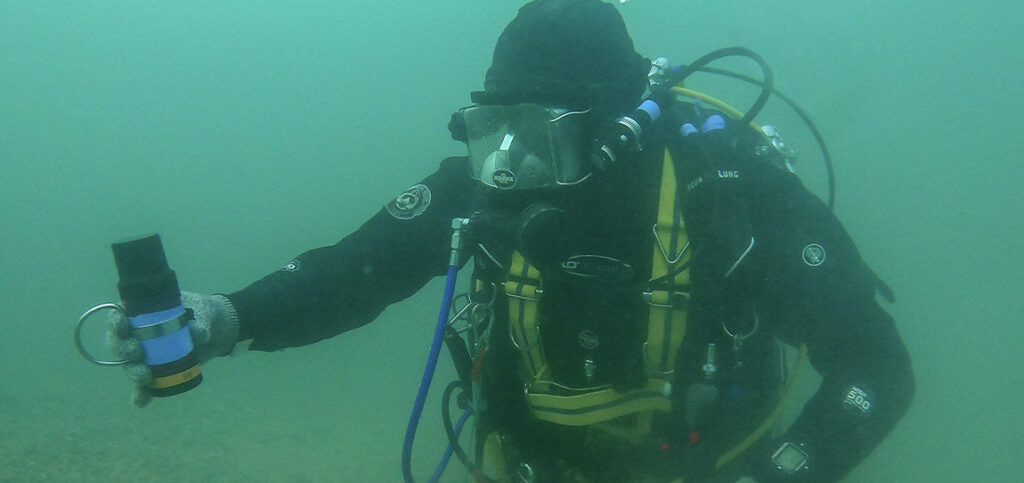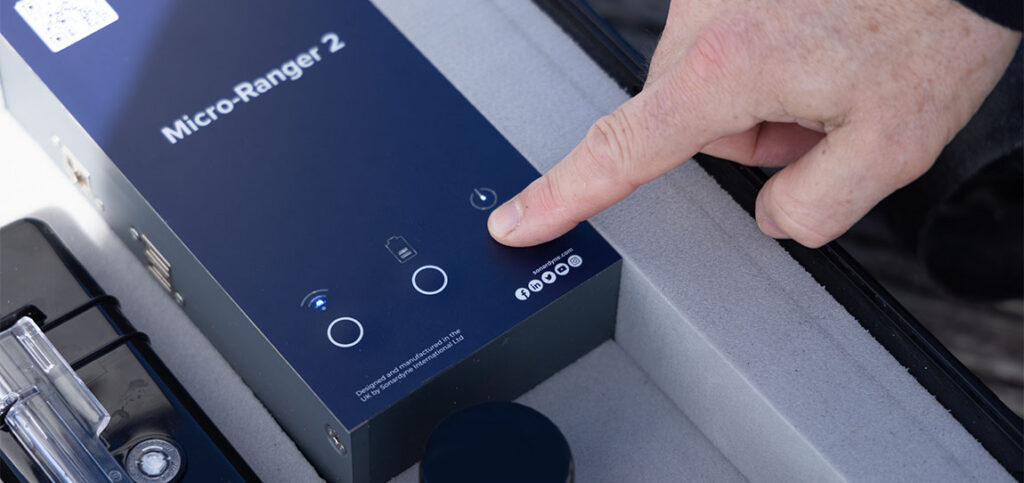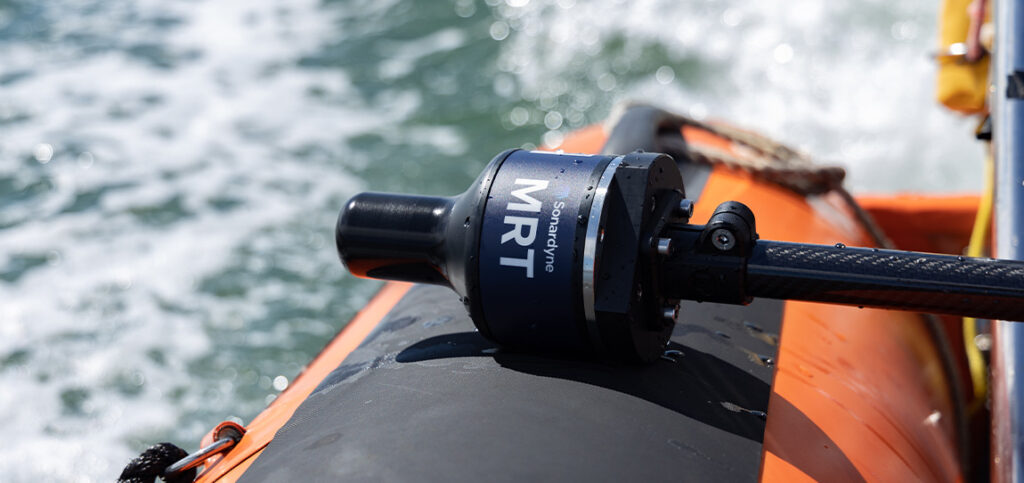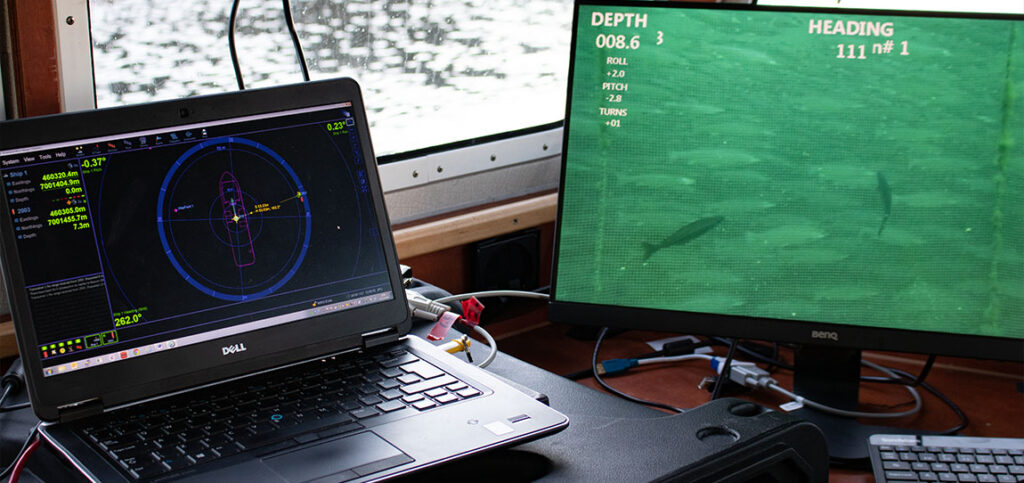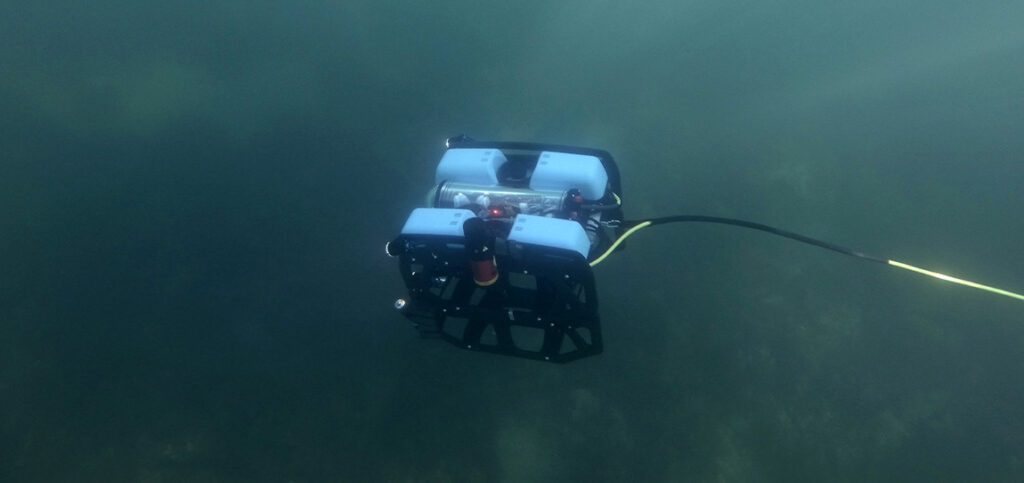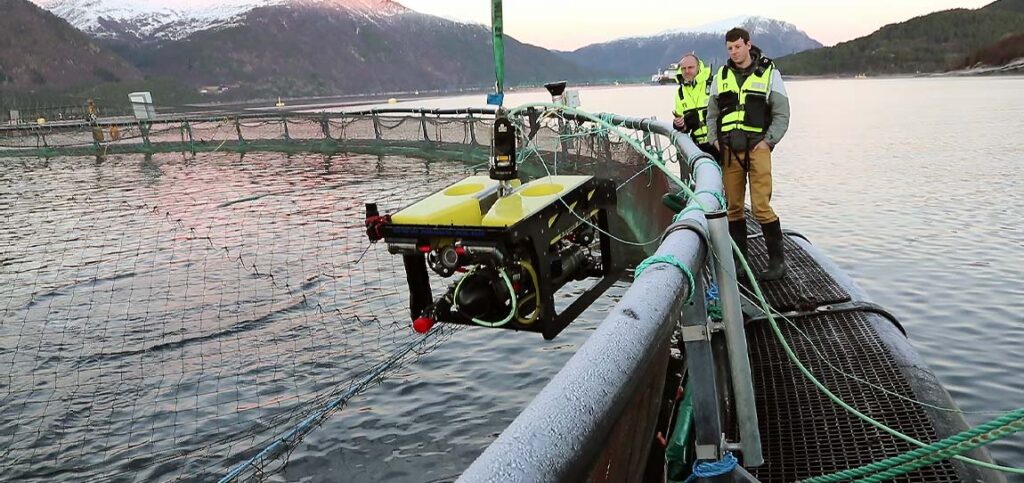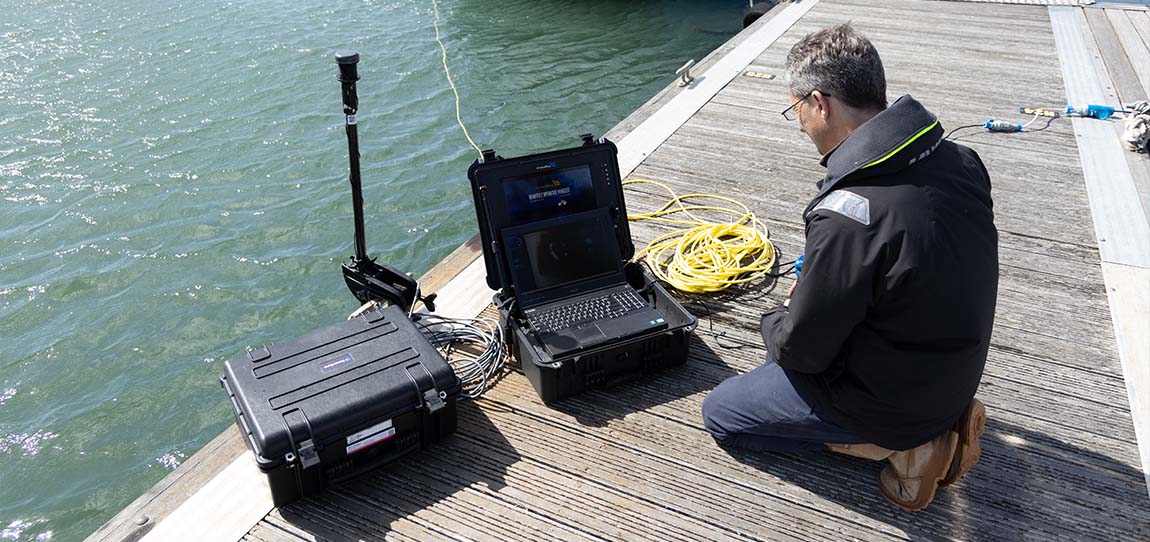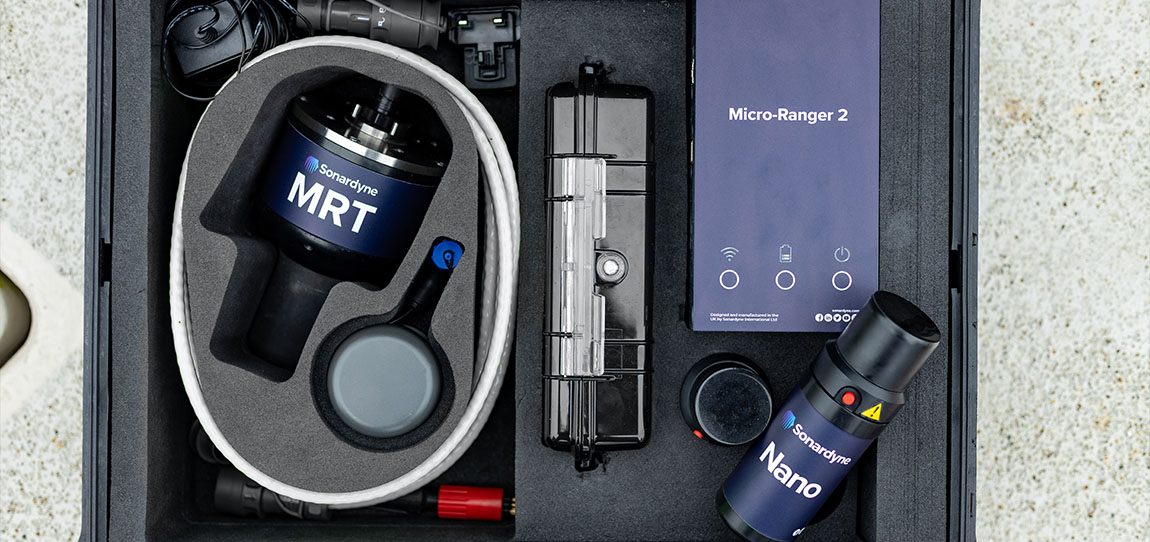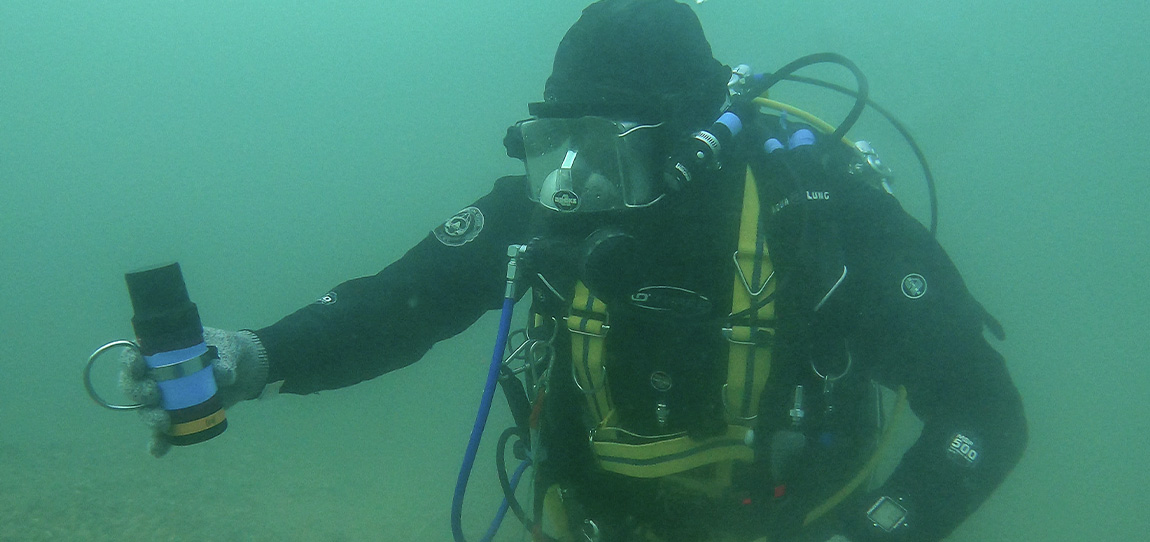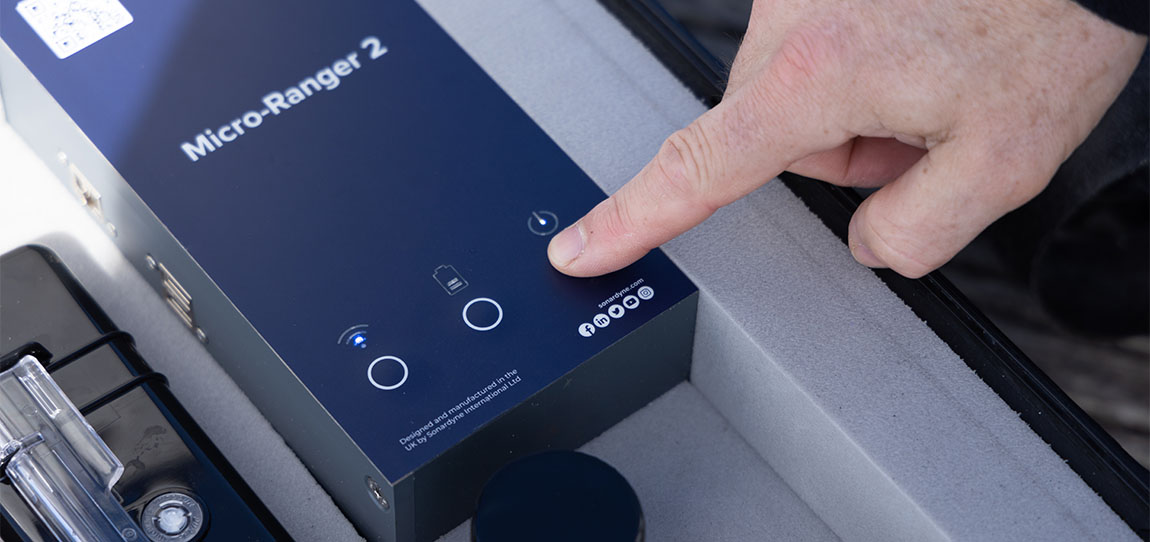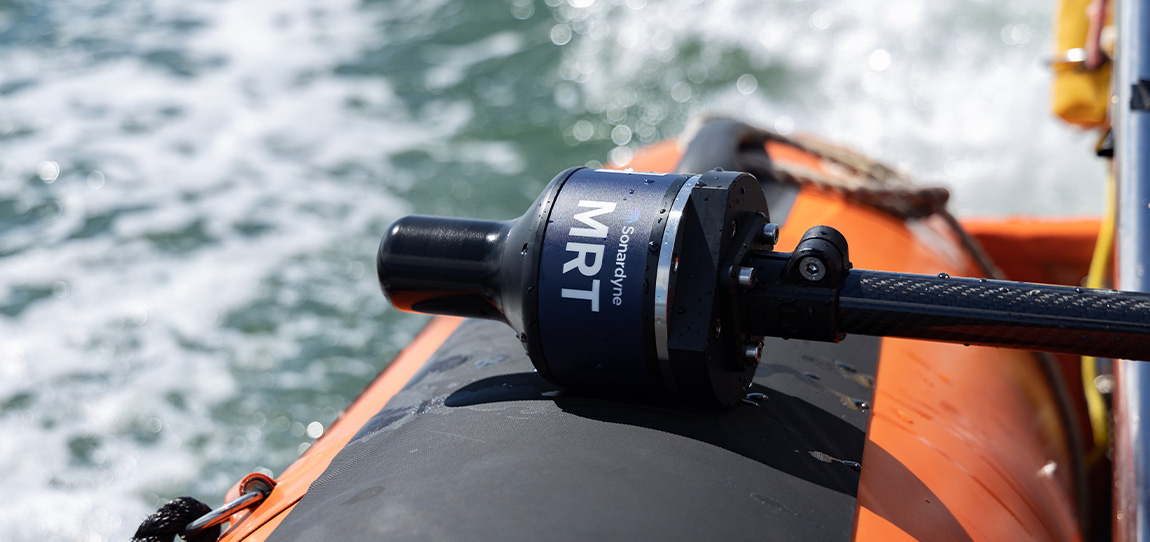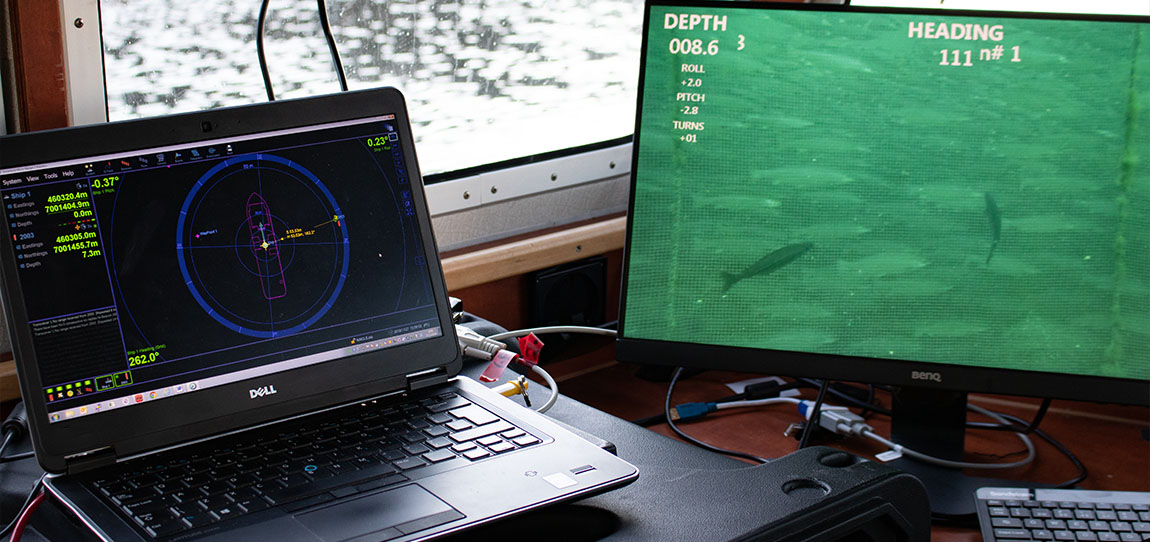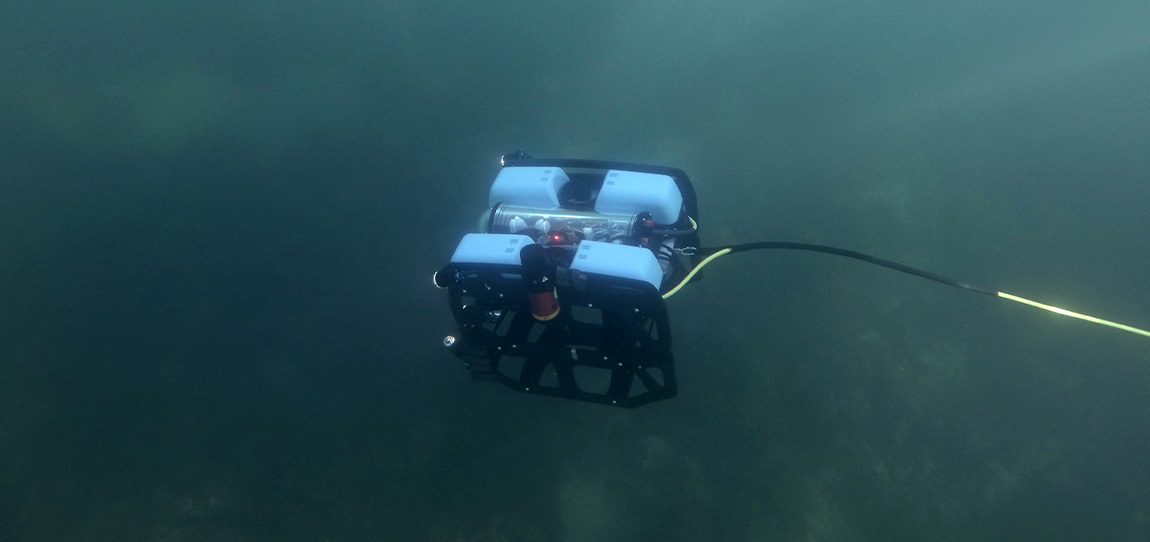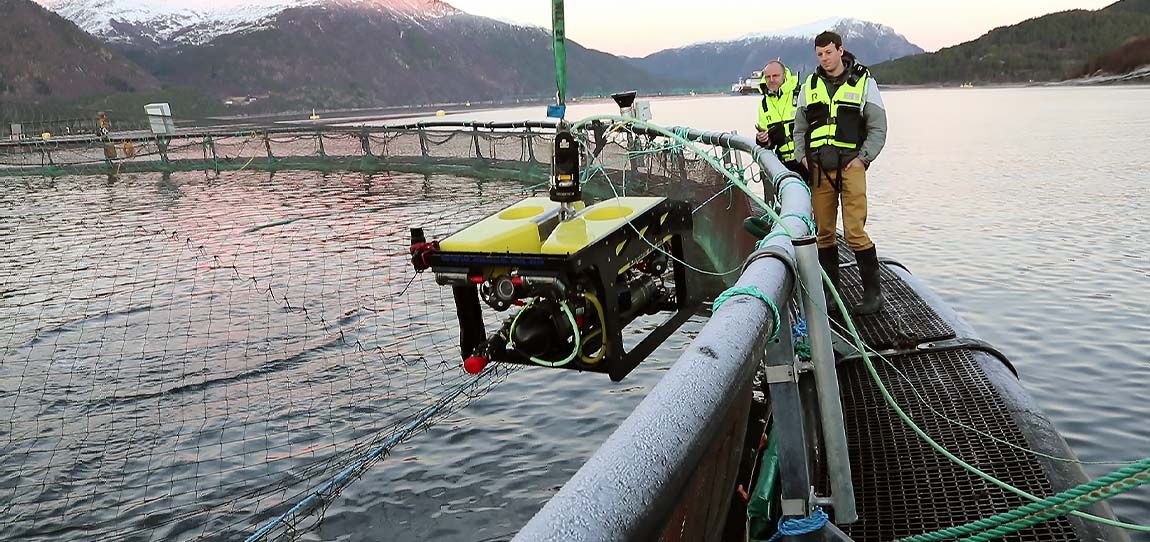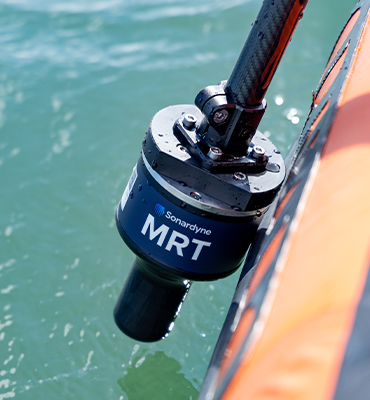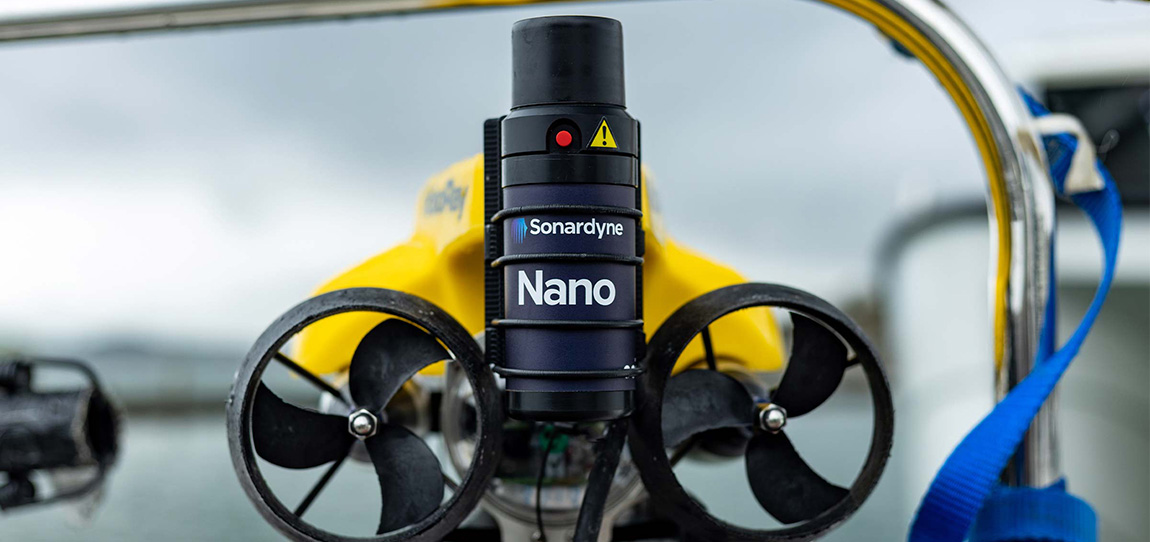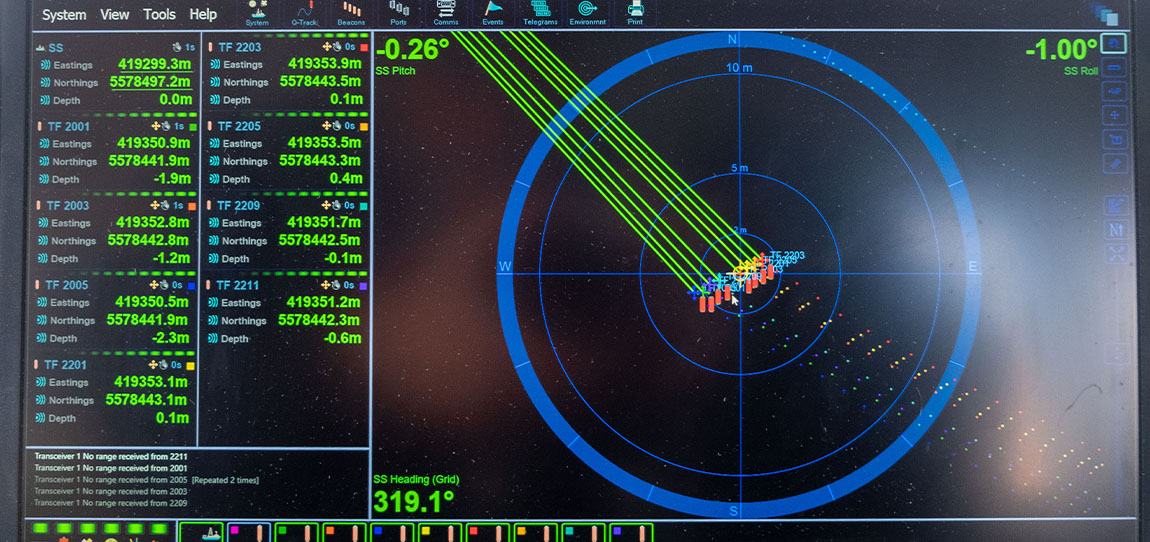Overview
iWand is our small, splashproof acoustic transponder test and configuration device. Use it with your 6G acoustic subsea hardware to set up transponders quickly and efficiently – whether you’re in the workshop getting ready for your next mobilisation or out on the back deck and just about to deploy.
iWand is used in conjunction with 6G configuration software running on your survey room or workshop PC. It enables all 6G (excluding WSM 6 which can only be acoustically tested) transponders to be easily configured. The configuration of the various transponders can then be exported to a document as an audit trail, or to a file that can be imported into Sonardyne positioning system navigation software packages like Fusion 2.
The simple to use interface and sunlight readable display makes it easy to test, gather and download configurations in all weathers, day or night.
At a glance
- Engineered for the workshop or out on the back deck
- Works with all 6G transponders
- Use it to acoustically test, configure and save settings for QC
- Splash-proof, rugged and portable design
- Speeds up pre-deployment checks – allows batch settings to be uploaded
Communication to a transponder is via the acoustic ‘wand’ antenna which is held against the transponder’s acoustic transducer. This tests the acoustic transmission and reception functions of the transponder ensuring they are operating correctly – a key performance indicator.
iWand has various PC connection options: Bluetooth, USB or serial. The USB is used to recharge the internal battery.
The internal GPS receiver provides UTC time tagging of communication to transponders and PC and can also be used to synchronise multiple transponders to UTC for logging applications.
Specifications table
| Feature | Type 8315 | |
|---|---|---|
| Operating Frequency | LMF (14–19 kHz), MF (20–34 kHz), HMF (34–40 kHz) | |
| Transducer Beam Shape (Wand) | Directional | |
| Case | Rugged polypropylene copolymer case with styrenic over mould shock protection | |
| Keypad | Sealed 5 key navigation pad | |
| Display | 320 x 240 sunlight readable LED display | |
| Connections | USB | |
| Serial | ||
| Bluetooth | ||
| BNC | ||
| Charging | USB to PC or USB to wall adaptor | |
| Internal Flash Memory | 1 GB | |
| Battery | Li-ion 3.7 V 1,300 mAh (typical) | |
| Battery Life | Normal (Screen On) | >5 hours (screen automatically turns off after a selectable period) |
| Idle (Screen Off) | >12 hours (press a key or ‘shake to wake’ to turn screen back on) | |
| Off for Shipping | >3 months (press a key to wake) | |
| Operating Temperature | -10 to 55°C | |
| Storage Temperature | -10 to 55°C | |
| Dimensions (Length x Width x Depth) | 276 x 84 x 40 mm | |
| Weight | 0.8 kg |
Frequently asked questions
Why isn’t serial communication available using the iWand in RT 6 Dunker Mode?
How to change the address of a DART using an iWand
How to set the latitude on a Gyro Compatt 6
How to correctly set a DPT 6 release mechanism
How can I deploy my Compatt 6+ using iWand?
How to correctly set a Compatt 6+ release mechanism
How to correctly set an RT 6-6000 release mechanism
How to correctly set a PIES release mechanism
How to load the release on an RT 6-3000 and RT 6-6000
Software and firmware
Datasheets
Manuals and quick start guides
Did you know?
iWand has various PC connection options: Bluetooth, USB or serial
Overview
The instrument is a turn-key solution comprised of carefully selected high grade and highly reliable inertial sensors integrated into in-house designed inertial measurement unit (IMU).
The selected inertial sensors are the standard for commercial aviation with a proven 20+ year track record. These sensors have a highly desirable characteristic being insensitive to vibration, temperature changes and having very limited initial errors. The result is a system which is highly suitable for the marine environment where performance, robustness and data integrity need to be available from initialisation, even during the harshest conditions.
Lodestar requires no external aiding and settles robustly in dynamic conditions in less than five minutes. On-board data storage and backup battery functionality ensures continued operation and eliminates the risk of data loss even if communications or external power are lost. Power-pass through to external aiding sensors is supported to ease integration requiring only a single cable for comms and power.
If a full INS solution is required, Lodestar can easily be field upgraded to a SPRINT system (apart from Lodestar 200). This makes the Lodestar a flexible and future-proof solution for both ROV guidance and survey applications.
Lodestar has a proven track record spanning more than 10 years in the field in diverse applications from ROV guidance and autopilot to demanding survey applications. The instrument is available in 4,000 and 6,000 metre depth ratings with a variety of connector options and configurations.
At a glance
- Designed to aid subsea vehicle guidance: AUVs, ROVs and UUVs
- Uses high quality Honeywell gyro and accelerometers
- Sensors available in three performance levels: 200, 300 and 500
- Fast settling time so you can get straight to work
- Integrated DVL option available; Lodestar-Nav
- Factory upgradeable to SPRINT INS
Lodestar-Nav 200
Lodestar-Nav 200 provides all-in-one navigation solution for subsea vehicles by combining a Lodestar 200 AHRS with our Syrinx Doppler Velocity Log (DVL) and a high accuracy pressure sensor in a single housing. This saves cost, payload space and the complexity of integrating and operating separate sensors from different vendors.
Lodestar-Nav is pre-calibrated providing the ROV pilots with a robust and reliable solution, even in the most challenging operational scenarios, without needing to worry about sensor offsets.
Syrinx DVL inside that provides a large altitude range and high precision at all altitudes; this combines the best of 300 and 1200 kHz DVLs. Each DVL transducer is fitted with a full depth rated water block to ensure protection of the internal components and easy replacement if damaged.
Lodestar-Nav can be interfaced via a single connection and/or the DVL can be interfaced separately depending on requirements. Continuous on-board data storage supports post-mission diagnostics and post-processing.
Size
Measuring just 260 mm tall, the 4,000 m rated titanium housing allows easy fitment to any subsea vehicle. 6,000 m housing option.
Long life sensors
Lodestars and SPRINTs use Honeywell-supplied RLGs and inertial sensors with 400,000 MTFB, which have been proven in over 20 years in commercial aircraft.
Connectivity
Most Lodestars can be upgraded to SPRINT in the field as your requirements grow so there’s no need to remove and re-install a different instrument.
Specifications
| Feature | Lodestar 300 | Lodestar 500 | |
|---|---|---|---|
| Depth rating | 4,000 / 6,000 m | 4,000 / 6,000 m | |
| Heading | 0.2° | 0.1° | |
| AHRS settle time | <5 minutes in dynamic conditions | <5 minutes in dynamic conditions | |
| Roll and pitch | 0.01° | 0.01° | |
| Power requirement | 20–50 V dc, 15 W nominal, 35 W maximum | 20–50 V dc, 15 W nominal, 35 W maximum | |
| Power pass through | 3 x for external aiding sensors (up to 3A per sensor) | 3 x for external aiding sensors (up to 3A per sensor) | |
| Back up battery type/life | Li-ion/5 minutes | Li-ion/5 minutes | |
| Data storage | 8 GB internal memory | 8 GB internal memory | |
| Serial ports/protocol | 4x RS232 or RS485 | 4x RS232 or RS485 | |
| Other ports | 1x Ethernet, 4 triggers | 1x Ethernet, 4 triggers | |
| Output rate | Up to 100 Hz | Up to 100 Hz | |
| Output telegrams | Industry standard AHRS/INS telegrams including acceleration and rotation rates | Industry standard AHRS/INS telegrams including acceleration and rotation rates | |
| Connectors | 4x Seacon / Seanet, 1x Seacon / Seanet | 4x Seacon / Seanet, 1x Seacon / Seanet | |
| Mechanical construction | Titanium | Titanium | |
| Dimensions (diameter x height) |
4,000 m (Seacon | 205 x 260 mm | 205 x 260 mm |
| 6,000 m (Seacon) | 205 x 280 mm | 205 x 280 mm | |
| 4,000 m (Seanet) | 205 x 250 mm | 205 x 250 mm | |
| Weight in air/water | 4,000 m | 18.5/11.5 kg | 18.5/11.5 kg |
| 6,000 m | 22/14 kg | 22/14 kg | |
| Operating temperature | -20 to +55°C | -20 to +55°C | |
| Storage temperature | -20 to +55°C | -20 to +55°C | |
| Shock rating | 22 g, 11 ms half sine | 22 g, 11 ms half sine |
Frequently asked questions
SPRINT, SPRINT-Nav, Lodestar and Lodestar-Nav troubleshooting
How to connect to the Lodestar within a Gyro USBL via an NSH
How to enter Transceiver & Lodestar Offsets for Optimised USBL
What cables do I need for my Lodestar?
How do I mate and calibrate a DVL to my Lodestar?
Can I power my subsea instruments with Lodestar or SPRINT?
How do I mate and calibrate a SPRINT or Lodestar to my Syrinx DVL?
What’s the difference between FOG and RLG?
STP files
Software and firmware
Software and control hardware
Manuals and quick start guides
Technical bulletin
Did you know?
Lodestar is highly optimised for cost, size, weight and power (C-SWaP)
Overview
TZT is compact, simple to fit and easy to operate, making it the ideal choice for shallow-draft workboats, RHIBs and uncrewed surface vessels (USVs). Onboard, the splashproof (normally surface-mounted) transceiver electronics module is cable connected to your PC equipped with our HydroPos software (or third-party software) and remote acoustic transducer.
The remote transducer is normally attached to a rigid pole and deployed over the side of the craft you’re using. A GNSS receiver is typically attached to the top of the pole but, aside from that, there’s no need for any other ancillary equipment, such as a gyro or attitude and reference system, and the complexities that integrating them would involve.
At a glance
- Accurately positions your Sonardyne MF or HF seismic node and ocean bottom cable-mounted transponders
- Provides high-accuracy positioning right into the surf zone: <1 m water depth
- Designed for small work boats, RHIBs and USVs working in parallel with your node laying vessel
- Choice of frequencies depending on your transponder inventory: HF for Type 7815s or MF for SST 6s
On command from your PC, the TZ Transceiver acoustically interrogates up to nine TZ/OBC transponder or up to 95 SST 6 transponders at a time and the acoustic responses are used to generate range measurements to each of them.
By combining the many acoustic range measurements made to each transponder, with GNSS data input into HydroPos, it is possible to generate accurate positions of all transponders to better than 1 m absolute precision.
Mounting TZT onto a USV unlocks the opportunity to reduce the risk, cost and environmental impact of your surveys by reducing the number of crewed vessels required to support your survey.
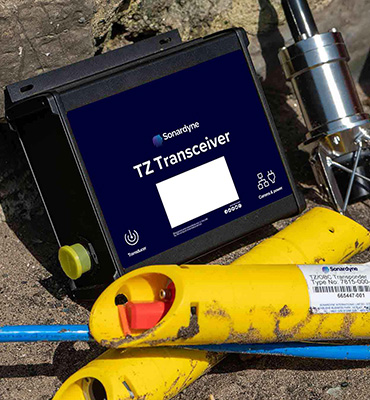
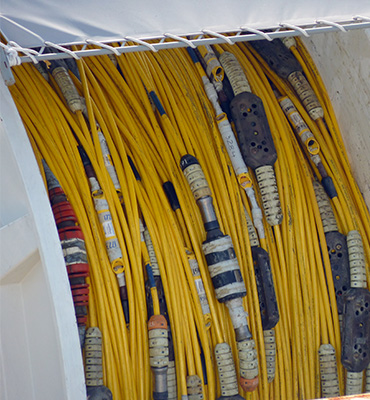
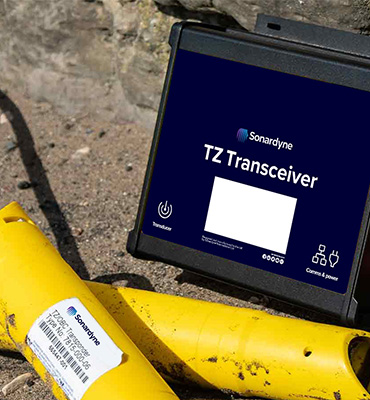
Specifications table
| Feature | Type 8263-010-0021 | Type 8263-010-0022 |
|---|---|---|
| Operating Frequency | HF (35–50 kHz) | MF (20–34 kHz) |
| Transmit Source Level (dB re 1 µPa @ 1 m) | >184–186 dB | >184-187 dB |
| Receive Sensitivity (dB re 1 µPa) | <90 dB | <90 dB |
| Ranging Precision | Better than 0.5 m | Better than 15 mm |
| Addresses | 401 | 1520 |
| Power | 28 V dc, maximum 2 A | 28 V dc, maximum 2 A |
| Communications | RS232/RS485 @ 9,600 to 115,200 baud, Ethernet | RS232/RS485 @ 9,600 to 115,200 baud, Ethernet |
| Mechanical Construction | Aluminium alloy | Aluminium alloy |
| Operating Temperature | -5 to +50°C | -5 to +50°C |
| Storage Temperature | -20 to +70°C | -20 to +70°C |
| Dimensions (Length x Width x Height) | 223 x 220 x 91 mm | 223 x 220 x 91 mm |
| Weight | 3 kg | 3 kg |
| Feature | Remote Transducer HF | Remote Transducer MF |
| Operating Frequency | HF (35–50 kHz) | MF (20–34 kHz) |
| Depth Rating (Acoustic Transducer) | 100 m | 100 m |
| Cable Length | 20 m | 20 m |
| Mechanical Construction | Stainless steel | Stainless steel |
| Dimensions (Diameter x Length) | 90 x 211 mm (without cable) | 90 x 211 mm (without cable) |
| Weight in Air | 3.7 kg (without cable) | 3.7 kg (without cable) |
Did you know?
TZT is suitable for USVs and seismic surveys
Overview
HPT 3000 is a high performance Wideband 2-enabled Ultra-Short BaseLine (USBL) tracking and telemetry transceiver compatible with our range of 6G transponders.
The transceiver’s acoustic performance is optimised for operations in coastal and near shore where high elevation tracking of targets is often required in low noise environments.
This unit is easy to install on a simple over-the-side pole arrangement enabling a wide range of vessels to take advantage of Mini-Ranger 2 including: anchored barges, small survey craft and uncrewed surface vessels.
HPT 3000 has an internal MTi-30 Xsens sensor which provides pitch, roll and heading data for search and salvage applications which are time critical requiring turn on and track functionality. Shallow water and pipelay from anchor barges also benefit from the internal sensor being calibration free.
The advanced multi-element processing enables transponders to be positioned more precisely, more quickly and more robustly due to improvements in signal processing algorithms. When used as part of a complete Mini-Ranger 2 USBL system, external heading and inertial navigation sensor, class leading performance is achieved.
At a glance
- Use it with Mini-Ranger 2 USBL
- Acoustically optimised for tracking targets in shallow water
- Simple to install on all types of vessel including uncrewed
- Ethernet comms for fast position updates
- Excellent corrosion resistance
‘Discovery Mode’ enables users to automatically detect previously deployed transponders including their configured address and channel, making the system easier to use. The HPT 3000 is a highly capable acoustic USBL tracking transceiver. Its multiple simultaneous channels enable robust tracking of 10 targets.
Manufactured in Aluminium Bronze, the HPT 3000 is intended to be fitted temporarily or permanently to a vessel’s through-hull or over-the-side pole. The full hemispherical coverage optimises performance in shallow water environments boosting transmissions and receive sensitivity in the horizontal axis.
Power and communications are contained in a single cable and because communications transmit from the transceiver to control-room ESH, data rates of up to 100 Mps can be achieved. Ethernet-based communications also enable the unit to interface with your vessel’s existing network for rapid installation.
Mini-Ranger 2 for the next-level USV operations
Read moreL3Harris takes USBL-aided AUV navigation to the next level
Read moreBringing special order accuracy to small diameter AUVs
Read more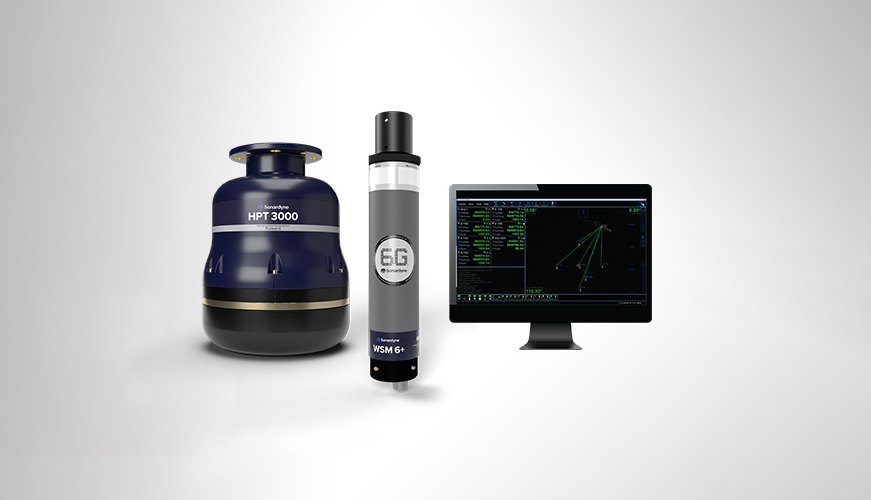
Mini-Ranger 2 USBL
Mini-Ranger 2 is our mid-level USBL target tracking system, perfect for nearshore operations, UXO surveys, search and recovery and structure inspections. With a 995 m operating range, extendable to 4,000 m, it can track up to ten underwater targets simultaneously, including divers, towed instruments, ROVs and AUVs.
Choose to add the Marine Robotics software pack and it will communicate with subsea robotic platforms, sharing positions and exchanging data.
A compact, easily installed system it’s your ideal choice for temporary installation on small survey vessels, as well as USVs.
For the full picture of what your Mini-Ranger 2 USBL is capable of, please visit its dedicated product page.
Specifications table
| Feature | Type 8212 | |
|---|---|---|
| Operational Frequency | MF (20–34 kHz) | |
| Transceiver Performance | Operating Range | Restricted to 995 m with Mini Ranger 2 system (4000 m with extended range version) |
| Acoustic Cover | Full 180° | |
| Range Precision | Better than 15 mm | |
| Positioning Repeatability External MRU | All transceivers tested to better than 0.2% of slant range 1 Drms / 0.14% 1 Sigma | |
| Positioning Repeatability Internal Xsens Pitch and Roll | All transceivers tested to better than 1.3% of slant range 1 Drms / 0.9% 1 Sigma | |
| Transmit Source Level (dB re 1 µPa @ 1 m) | 194 dB | |
| Tone Equivalent Energy (TEE) | 200 dB (3 JA) | |
| Electrical | 48 V dc (±10%), typical 15 W, maximum 120 W | |
| Communication | Ethernet 100 Mbps | |
| Operating Temperature | -5 to 40°C | |
| Storage Temperature | -20 to 45°C | |
| Mechanical Construction | Aluminium bronze | |
| Dimensions (Height x Diameter) | 310 x 234 mm | |
| Weight in Air/Water | 19.4/9.5 kg |
Frequently asked questions
How to clean a transceiver array face
MF Beacon Positioning for Transition Zone and Ocean Bottom Cable Applications
HPT 2000/3000 Testing
Has anyone ever installed an echosounder and Ranger 2 USBL transceiver directly beside each other? Would this work?
How do USBLs work?
Does the HPT’s main connector need any maintenance?
When to use Depth Aiding
What acoustic address should I use for my USBL transponder
How to interface Ranger 2 into a 3rd party survey system
How can an uncrewed system interact with Ranger 2 software?
STP files
Software and firmware
Software and control hardware
Datasheets
Manuals and quick start guides
Technical bulletin
Did you know?
HPT 3000 is part of our Mini-Ranger 2 USBL system
Overview
MRT is supplied as part of our Micro-Ranger 2 USBL system, a complete one-box underwater diver, ROV, AUV and equipment tracking solution. Everything you need, including two transponders, is supplied in a battery-powered IP-67 rated carry case for portable, go-anywhere marine operations.
MRT is supplied with a moulded 10 m underwater cable that is connected up to your Micro-Ranger 2 command case. The cable provides both power and comms to the MRT.
At a glance
- Easy to deploy off a pontoon or RHIB
- Optimised for high elevation tracking in shallow water
- Internal magnetic compass for instantaneous and calibration free motion compensation
- Built in health checks including array and electronics diagnostics
- Supplied with 10 m of deck cable
Deployment is as simple as it gets. Off a pontoon, over the side of your RHIB or even fixed to a USV. It can be suspended using its cable or on a simple pole arrangement. We even offer a lightweight carbon fibre pole with fixation clamp and a top bracket to mount the system’s included GNSS antenna.
MRT uses an integral AHRS sensor which provides pitch, roll and heading data that automatically compensates for the dynamic motion of the vessel, removing the need for an external sensor and pre-use calibration. It’s multi-element processing enables transponders to be accurately positioned at ranges of 995 metres.
Specifications table
| Feature | Type 8243 |
|---|---|
| Operational Frequency | MF (20–34 kHz) |
| Operating Range | Up to 995 m |
| Depth Rating | 25 m |
| Acoustic Coverage | Greater than 200° |
| Range Accuracy | Better than 15 mm |
| Angular Accuracy | ±3° |
| Transmit Source Level (dB re 1 µPa @ 1 m) | 184 dB |
| Electrical | 48 V dc (±10%) typical 1.5 W, maximum 25.5 W |
| Communication | Ethernet 100 Mbps |
| Operating Temperature | -5 to 40°C |
| Storage Temperature | -20 to 55°C |
| Mechanical Construction | Stainless steel 316, PVC and polyurethane |
| Dimensions (Height x Diameter) | 177 x 106 mm (excluding connector) |
| Weight in Air/Water | 1.84/0.99 kg |
Frequently asked questions
STP files
Software and control hardware
Datasheets
Manuals and quick start guides
Did you know?
MRT is part of Micro-Ranger 2 USBL with an operating range of up to 995 m
Maximum efficiency with the best value underwater tracking system on the market
It’s built on the same tried and tested cutting-edge hardware and digital acoustic technology found in the rest of our Ranger USBL family, so you can expect unrivalled performance without the complexity or cost. Its robust and compact format is ideal for your shallow coastal water and inland waterway operations thanks to its ultra-portable design. Track your divers and autonomous underwater vehicles at up to 995 m range.
Whether you’re a first-time user of USBL technology or a seasoned professional, you’ll find Micro-Ranger 2 incredibly easy to use – it’s a one box solution, make a few simple connections and your operation is ready to go!
We’ve engineered everything to fit in a robust carry case. Apart from your laptop to run the software, nothing else is needed and it’s so compact you can carry it on a plane. A built-in battery provides more than 10 hours of continuous use, enough for a full day of activity out on the water. The case can also take external power from a boat or shore supply.
Why choose it?
- Portable, everything you need comes in one box
- Quick to connect up and deploy
- Easy to use, no training needed
- Shares common platform with other Sonardyne USBLs
- Light and compact, attach to divers and small vessels without restricting their operations
- Developed and supported by a company with over 50 years of experience in innovative underwater technology
The kit
Transceivers
Ideal for tracking targets in shallow water up to the surface, the omni-directional acoustic tracking transceiver (MRT) is small and light enough to deploy on its cable from a pontoon, over the side of a vessel or on the sensor spar of a USV.
Micro-Ranger 2 software has many of the innovative features from our other larger Ranger 2 USBL systems to ensure you have everything you need to track underwater targets.
If your operations need to track and communicate with small AUVs or subsea drones, an optional Marine Robotics feature pack is available.
Transponders
What every diver, small towfish and micro ROV / AUV should be wearing, our Nano transponders are the perfect size and weight for tracking your important assets in shallow water without interfering with their movement. The two you will receive with Micro-Ranger 2 are second generation units offering extended battery life and depth rating. A connector-equipped Nano is also available allowing it to operate continuously via an external power source.
Simply choose the type of Nano transponder to suit your operation at the time of ordering. Micro-Ranger 2 can also be used with other Sonardyne 6G transponders including WSM 6+ and WMT.
Integrator/Marine robotics kit
If your operation needs you to both track and communicate with targets, the Micro-Ranger 2 integrator system kit is available. It comes complete with our add-on Marine Robotics software pack and AvTrak 6 Nano, which support two-way messaging, vehicle control and tracking in one small instrument.
Micro-Ranger 2 and MSDS Marine
Performance
• Up 10 targets tracked, sequentially
• 995 m maximum tracking range
• 3 Hz position update rate
• Up to 5% of slant range system accuracy
Acoustics
• MF frequency (19–34 kHz)
• Omni-directional coverage for wide area tracking
• Sonardyne Wideband 2 acoustics for reliable performance in shallow water
• Supports Sonardyne Messaging Service for data exchange (200 to 9,000 bps)
Ownership
• IP67-rated ruggedised carry case
• ITAR Controlled: No
• UK Export Licence: Not required
• Warranty: 1 year return to Sonardyne service centre
• What’s in the box: MRT with 10 m of cable, command unit, 2 x Nanos (gen 2), charger, ancillary cables, external GNSS antenna, software (PC not supplied)
Overview
• Portable and quick to mobilise
• Ideal for supporting science operations conducted in rivers, lakes and coastal waters.
• Can be configured for installation on a uncrewed surface vessel for remote missions.
Specifications table
| Feature | Specification |
|---|---|
| Design | Portable, everything you need comes in one box |
| Quick to connect up and deploy | |
| Easy to use, no training needed | |
| Shares common platform with other Sonardyne USBLs | |
| Performance | Up to 5% of slant range system accuracy |
| Up 10 targets tracked, sequentially | |
| 995 m maximum tracking range | |
| 3 Hz position update rate | |
| Acoustics | MF frequency (19–34 kHz) |
| Sonardyne Wideband 2 acoustics for reliable performance in shallow water | |
| Supports Sonardyne Messaging Service for data exchange (200 to 9,000 bps) | |
| Omni-directional coverage for wide area tracking |
